Since its inception, Formula 1 has been the place of the good life par excellence. And even now, in the world of politically correct, it is still one of the few environments where you can still have fun.
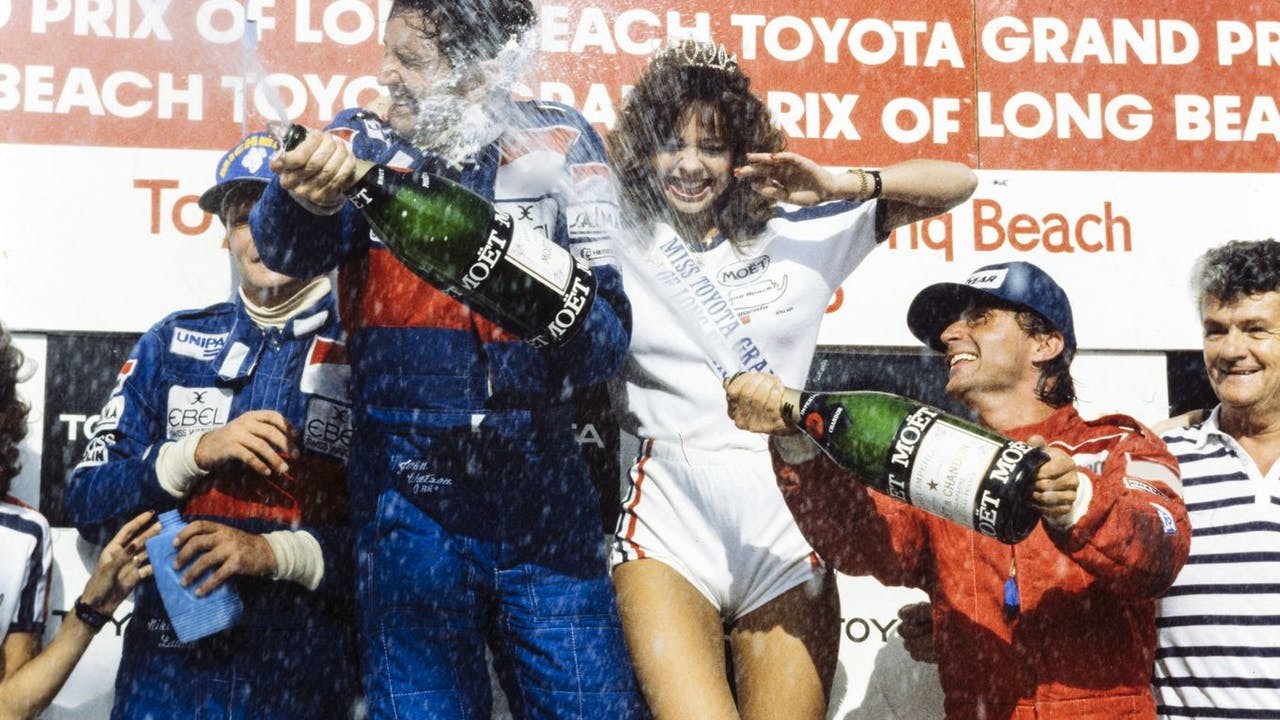
"I spent half my money on gambling, alcohol and wild women. The other half I wasted." William Claude Dukenfield.
Over time, the way to have fun in F1 has undergone changes depending on the various eras.
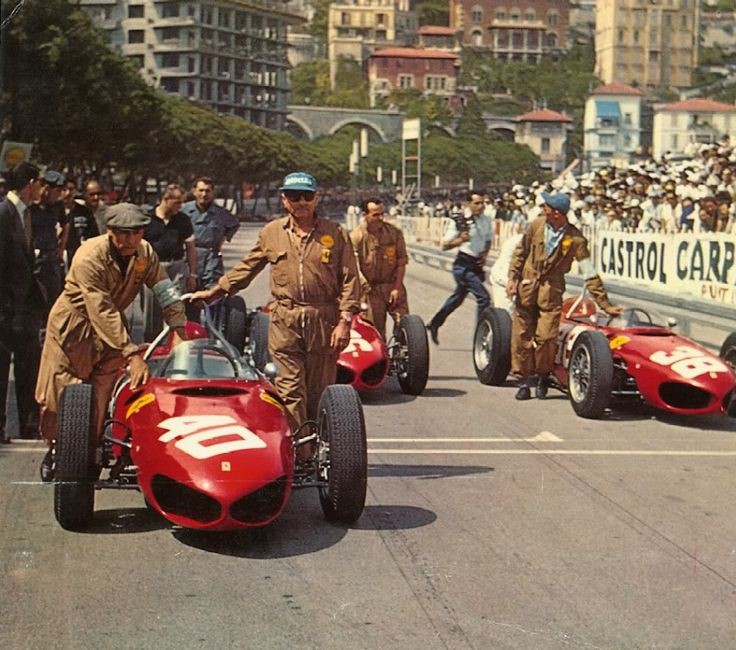
If Monte Carlo has always been the center of glamor and residence of many of the drivers, Hunt was the protagonist of the disenchanted life of his time and an emblem of light and happy F1.
James made his F1 debut at the glitzy and glamourous party-town of Monaco at the 1973 edition of the race at the principality. Here began his remarkable Hesketh adventures, the maverick start-up team run by party-animal Lord Hesketh rocked the F1 establishment with their intoxicating and irresistible formula of "champagne, babes and racing" which captured the imagination of the masses, beyond the paddocks and race tracks of the world.
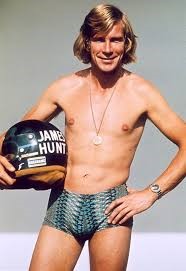
His sex appeal was magnetic and, inevitably, became a selling point as photos of James and his capers with A-list supermodels and actresses were welcomed by the mass media of the crazy seventies.

His exploits are the stuff of legend which launched a million headlines. F1 had their first true rock-star! But it is also very important to recall him as not only a sought-after ladies' man and partygoer, James was also a very fast and effective race driver, a gutsy racer and a winner during F1's most lethal era.
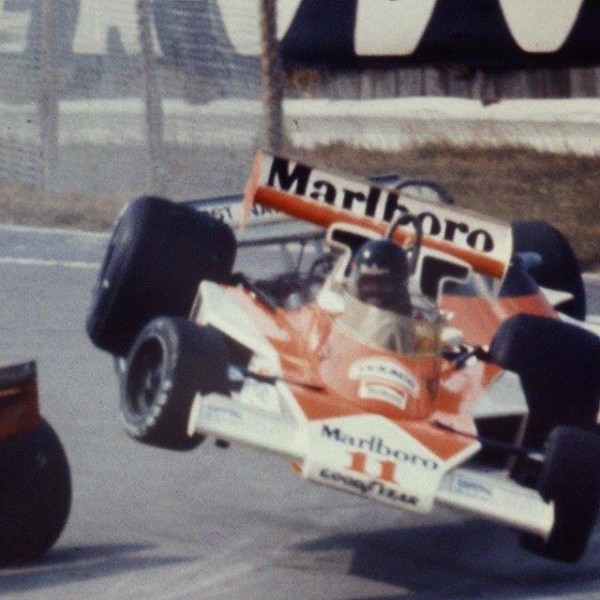
He earned his "Hunt-The-Shunt" nickname during his junior career but had that spark of greatness waiting to be lit.
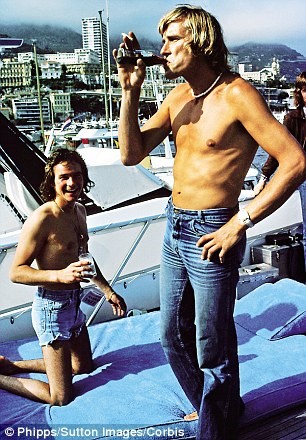
Somehow I can't imagine a Nico Rosberg or a Lewis Hamilton in the role, guess Senna sort of ruined all that with that darn professionalism and fitness... I suppose Formula 1 drivers just don't go on two week long sex, booze and drug binges in between races anymore, like James Hunt did in 1976 before the Japanese Grand Prix. While Jackie Stewart famously abstained from sex a week before a motor race, Hunt would often have sex minutes before climbing into the cockpit. Nothing could have prepared Patrick Head, now co-owner of the Williams F1 team but then a young car designer, for the morning when he inadvertently walked into the wrong pit garage. He found Hunt inside, with his racing overalls around his ankles, cavorting with a Japanese girl. Hunt laughed when he saw the interloper, who left, not quite believing what he had seen. A few minutes later, Hunt left the garage and went around the side to carry out his pre-race ritual of vomiting — the result of extreme nerves combined with overindulgence.
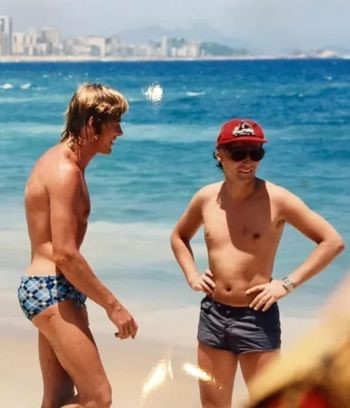
James Hunt, Speedo, with Niki Lauda in shorts.
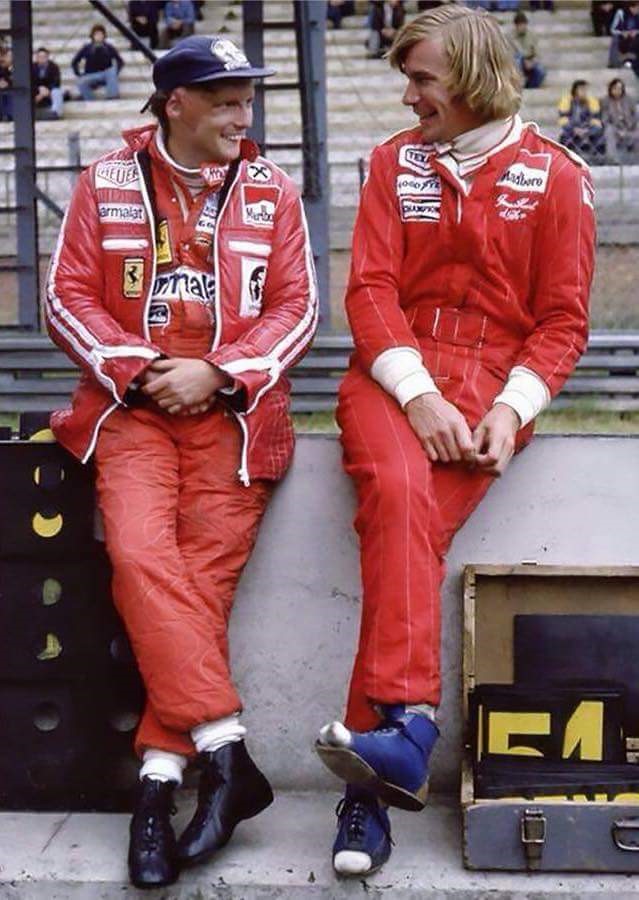
James Hunt and Niki Lauda.
Finally ready for action, Hunt went out to drive the race of his life... and won the 1976 world championship, beating his nearest rival Lauda by one point.
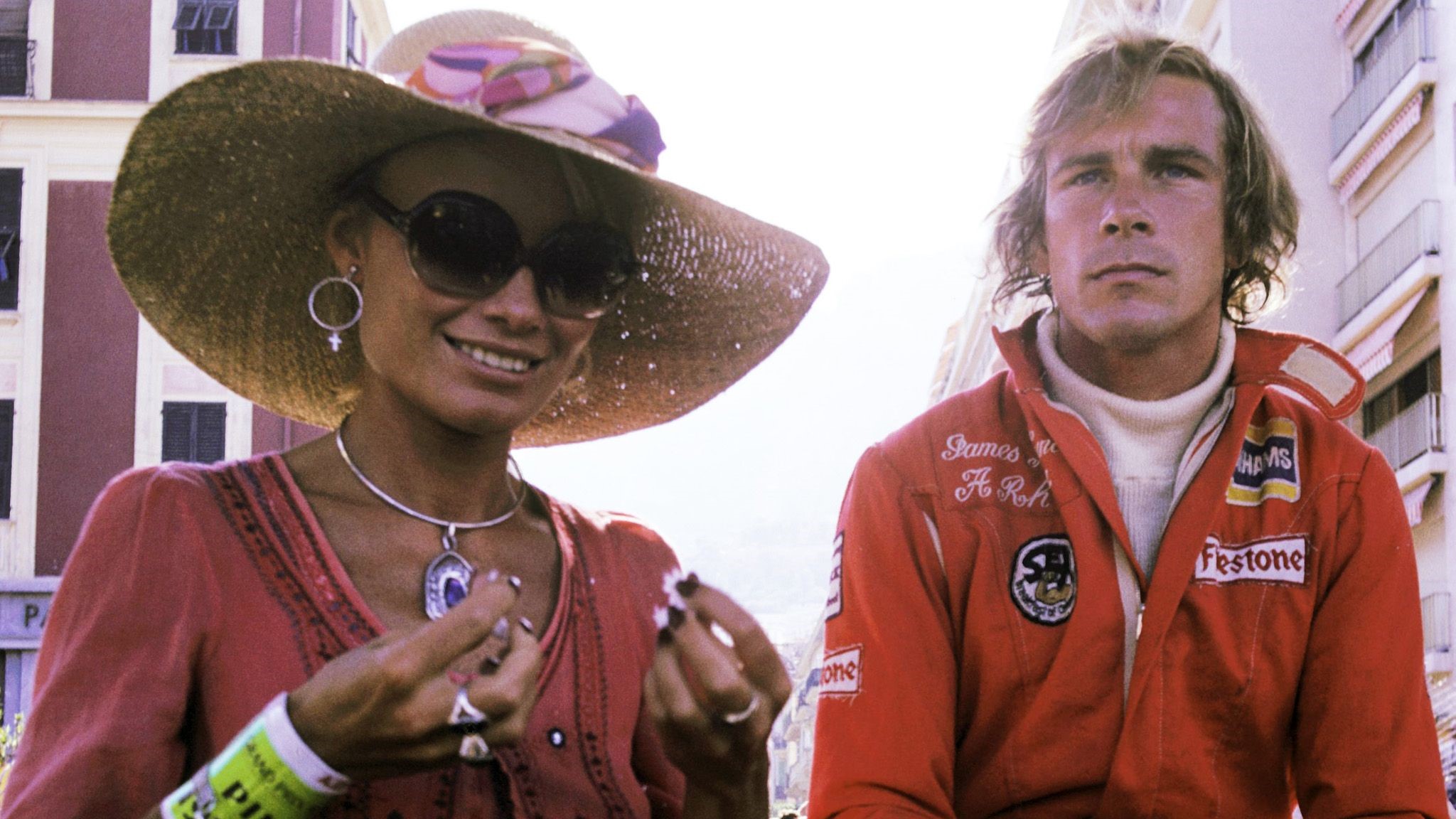
James Hunt with his wife Suzy Miller.
But that's not all, he ended up selling his wife too, to Richard Burton... for $1,000,000!
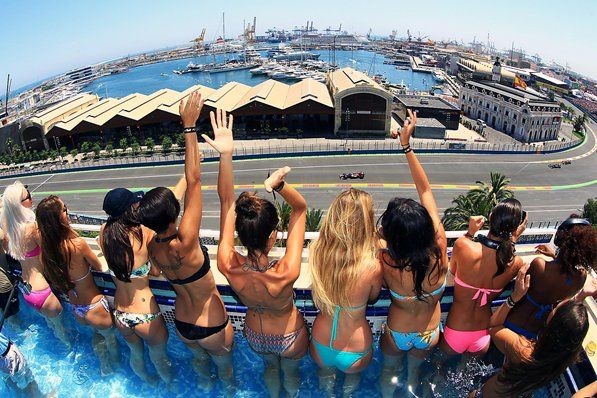
Girls at the Red Bull swimming pool party. F1 World Championship, Race Day, Valencia, Spain, Sunday, 24 June 2012.
Today it all depends on money and the fact that rich kids get to drive in Formula 1 is taking hold.
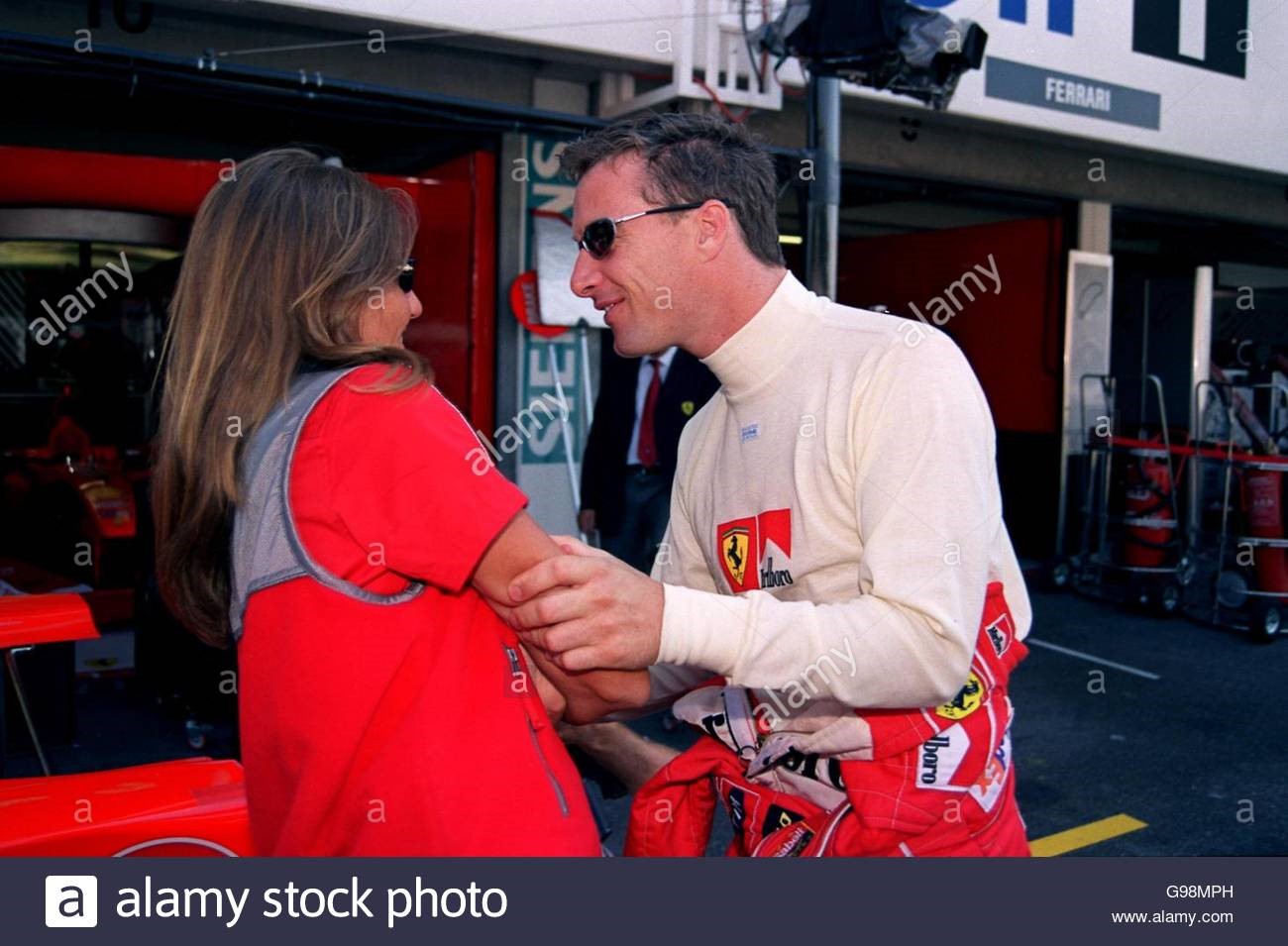
Eddie Irvine at German Grand Prix.
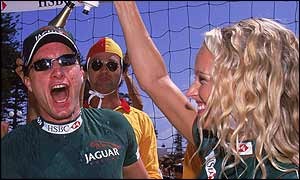
Eddie Irvine revelled in his playboy lifestyle.
We wish the womanizing and hard-partying drivers of the 70s like James Hunt and John Watson would come back!
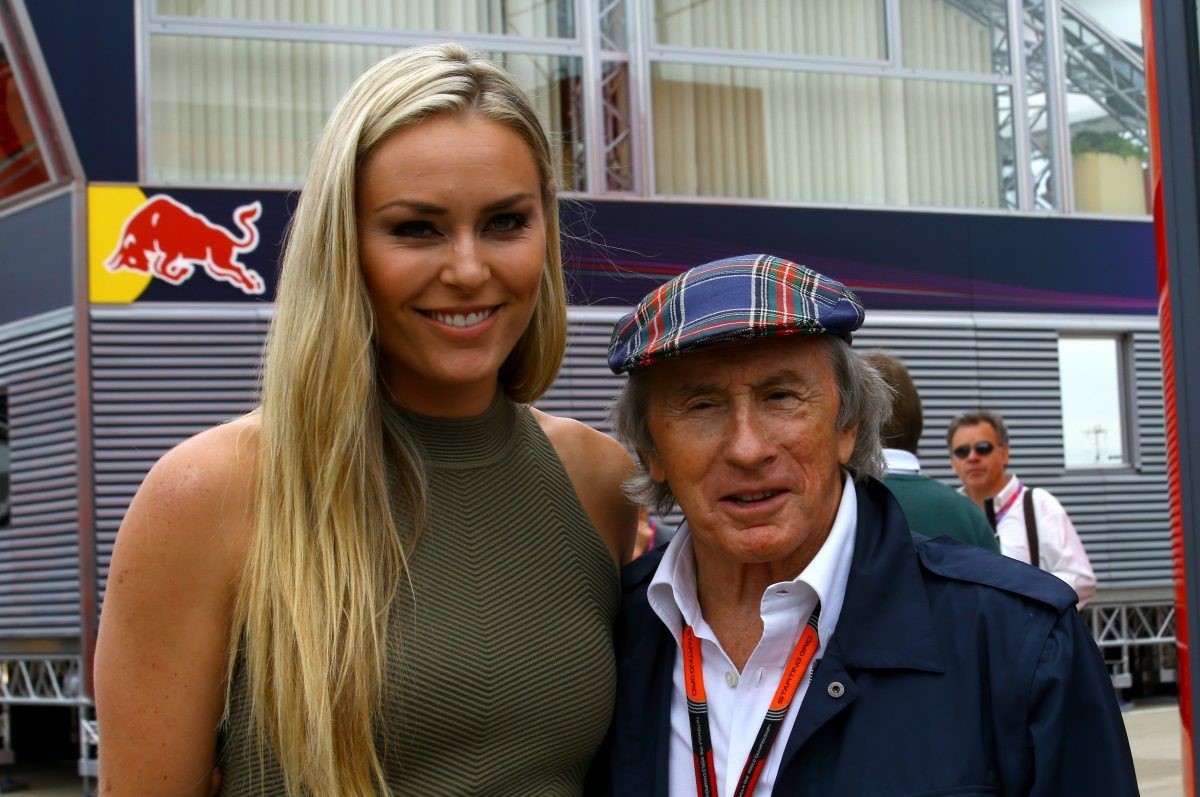

Jackie Stewart and Lindsey Vonn.
Grid girls not the reason for lack of female presence in F1 – Stewart. Michael Delaney 04.02.2018.
Sir Jackie Stewart believes the lack of a top female Grand Prix driver has no link whatsoever with decades of grid-girl presence in F1.

John Player Special girls at 1974 British Grand Prix at Brands Hatch.
Liberty Media kicked up a storm last week when it confirmed its decision to take the girls off the grid at Grand Prix events, because their presence was no longer in line with the values the sport wishes to embody going forward.
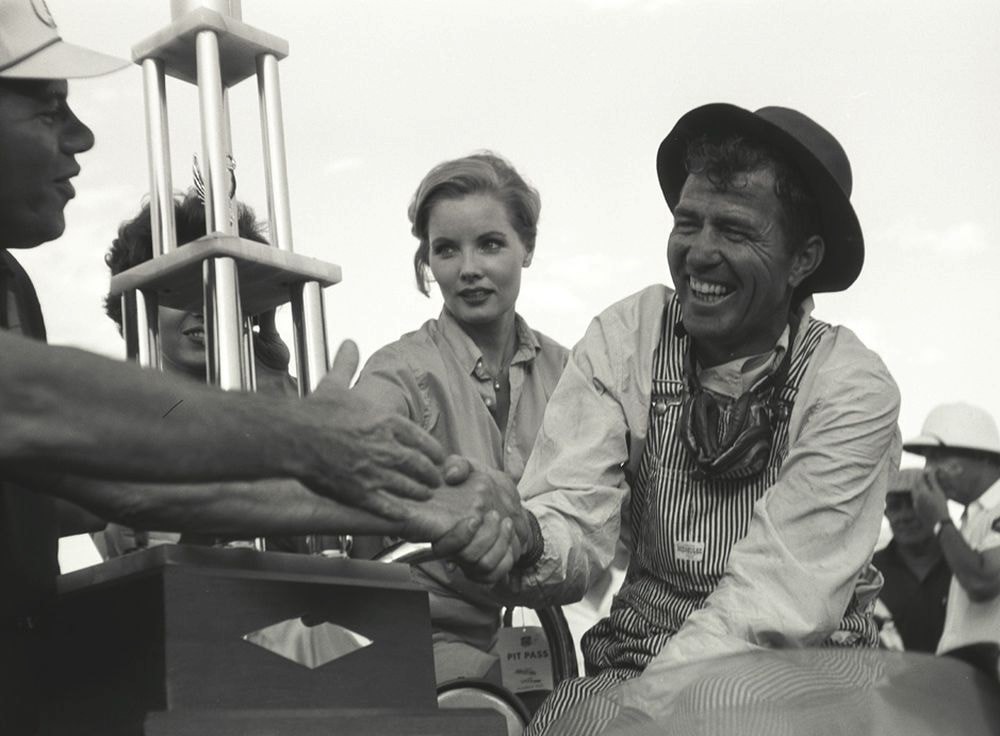
Vintage grid girls.
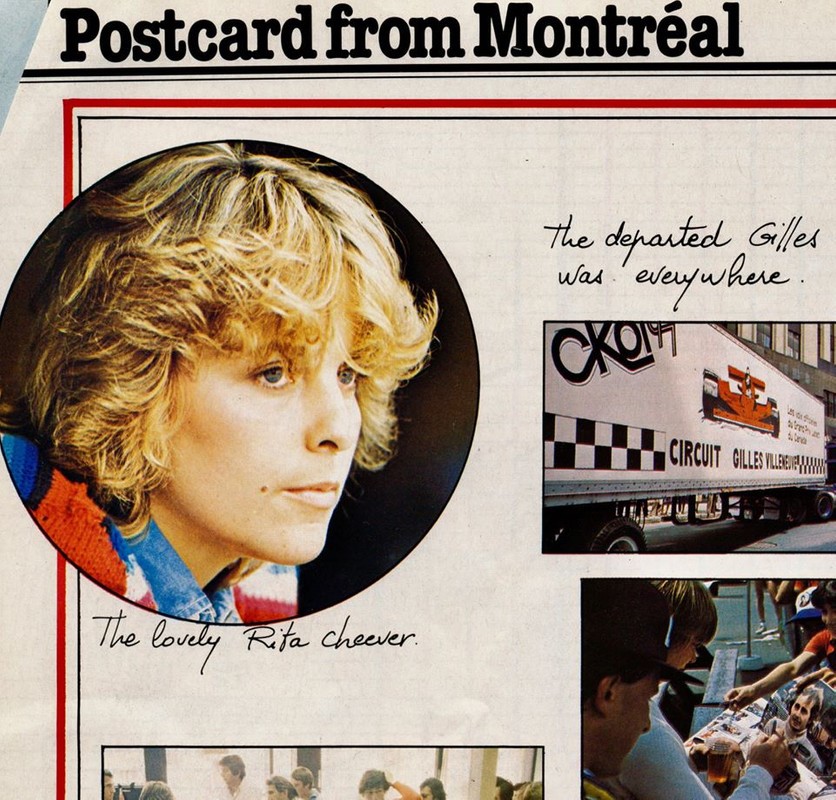
The move sparked a fiery debate in the media between progressive thinkers and traditionalists, with no side clearly emerging a winner.
Since the inception of the world championship in 1950, only a handful of women drivers have gained access to F1, with no meaningful results.
A state of affairs which historically has no link to gender discrimination, says Stewart.
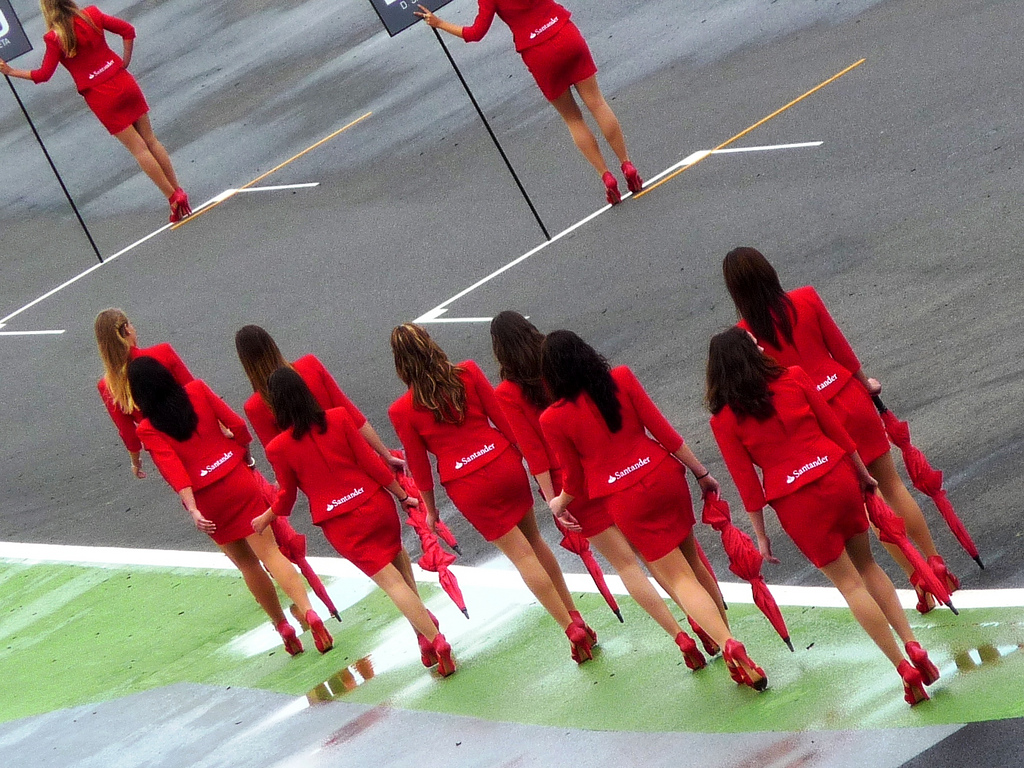
Grid girls.
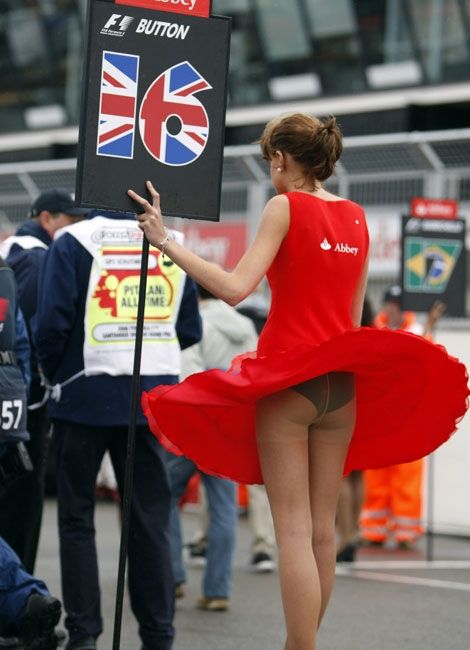
A grid girl on a windy day….
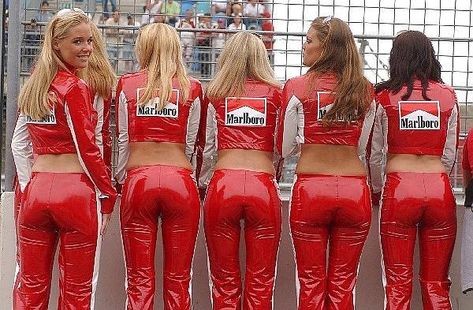
"The idea that grid girls put off women drivers is baloney," says the legendary triple world champion, seen here in the picture above with another sports legend, Olympic Gold Medalist Lindsey Vonn.
"If a racing team could find a female that’s going to get to the top in Formula 1, boy would they be paying attention.
"They’d be falling over themselves. Formula 1 would love to see a woman. If we had a woman, the viewing numbers would go up.
"Commercially a female driver would be hugely successful with make-up, clothing, all the cosmetics and fashion brands.
"For whatever reason, young women are not going to karting tracks.
"That’s what all the boys do. Whether it’s Lewis Hamilton, Fernando Alonso, Sebastian Vettel, these guys, from a young age, have been week after week at go-kart events.
"A girl so far has never done that and become a great driver. You have to keep in mind that, from the hundreds of thousands of go-kart racers in the world, there are only 20 Grand Prix drivers who make it into Formula 1."
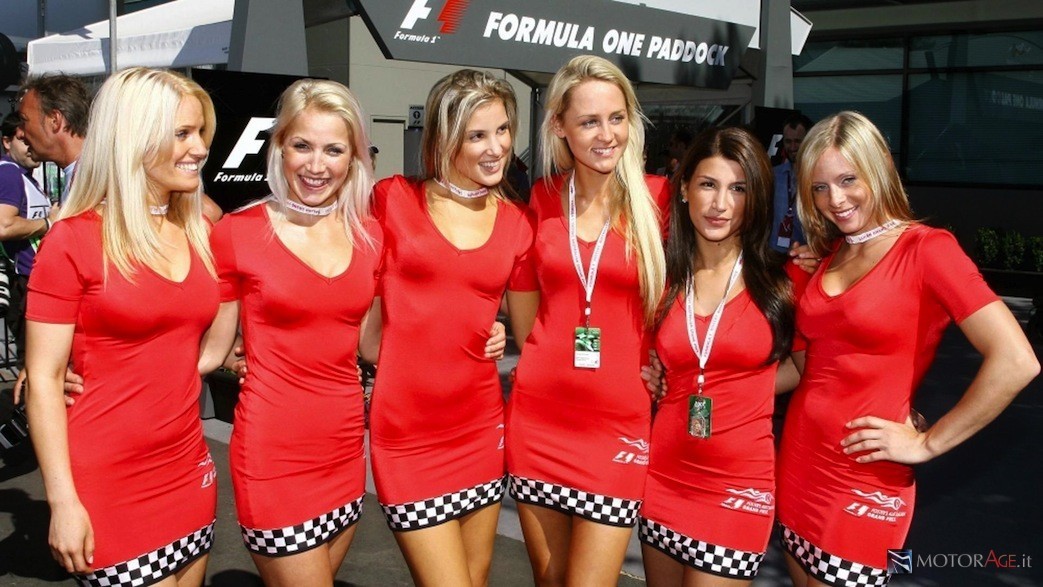
Stewart has always seen grid girls as adding to the sport's glitz and glamour but always within the boundaries of respect and decency. But events of late, mainly in the US, involving sexism, harassment and gender discrimination have forced Liberty to take preemptive action, according to the Scot.
"The girls of this generation are not overly provocative. They are very well presented. They are properly dressed. It’s not as if they are all in bikinis or something," adds Stewart.
"In America, you have the Weinstein thing and many more cases of, ‘he tried to do something’ or, ‘he rubbed against me’.
"I don’t think any drivers have crossed the line but I really don’t know because I haven’t been part of that world.
"Because of the Weinstein thing, I think Formula 1 has taken preventative medicine."

Niki Lauda.
Monaco's glitz, glamour and girls PICTURED as F1 hits Monte Carlo. 26.05.2018.
Monte Carlo, the most glamorous race of the year, is famed for its glitzy casinos, rich residents, streets lined with supercars and, of course, its relationship with F1.
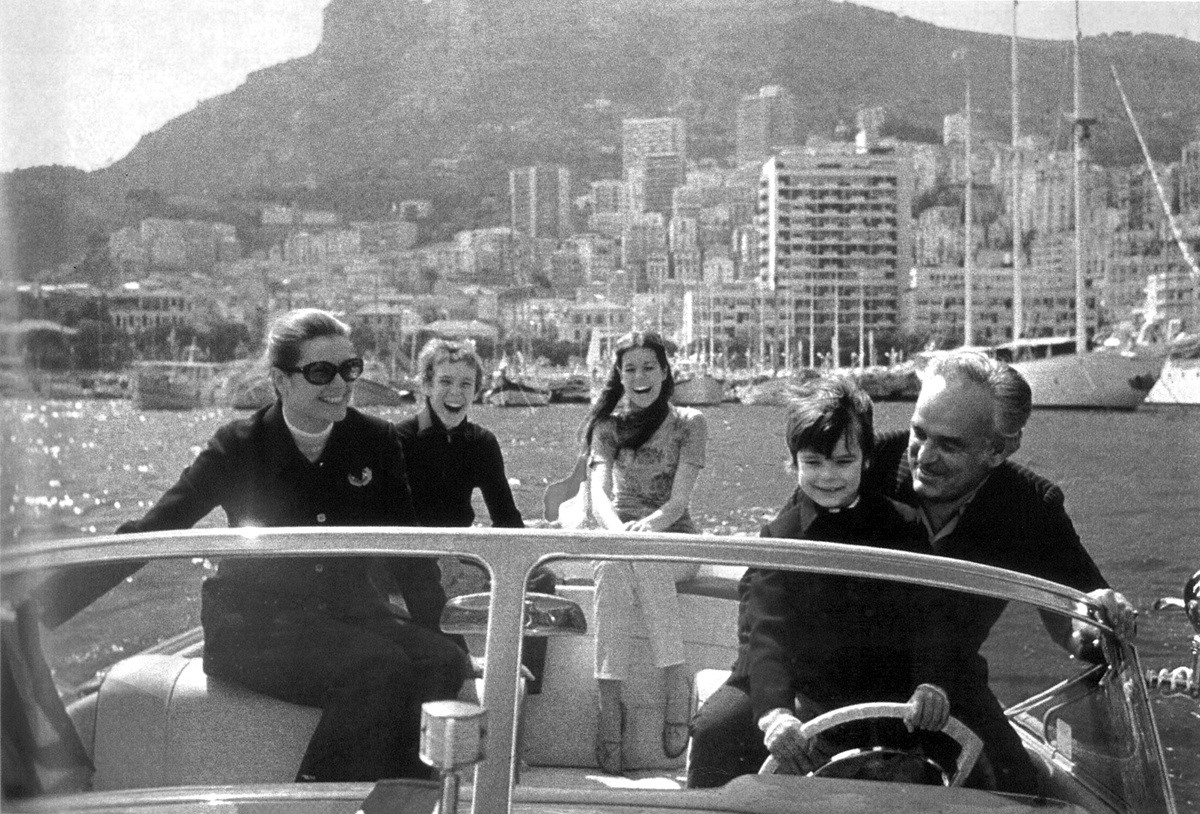
Prince Ranieri and his family.
Pictures shared by jet-set residents and holidaymakers in the tiny-state offer just a tiny window into the glamour of Monte Carlo.
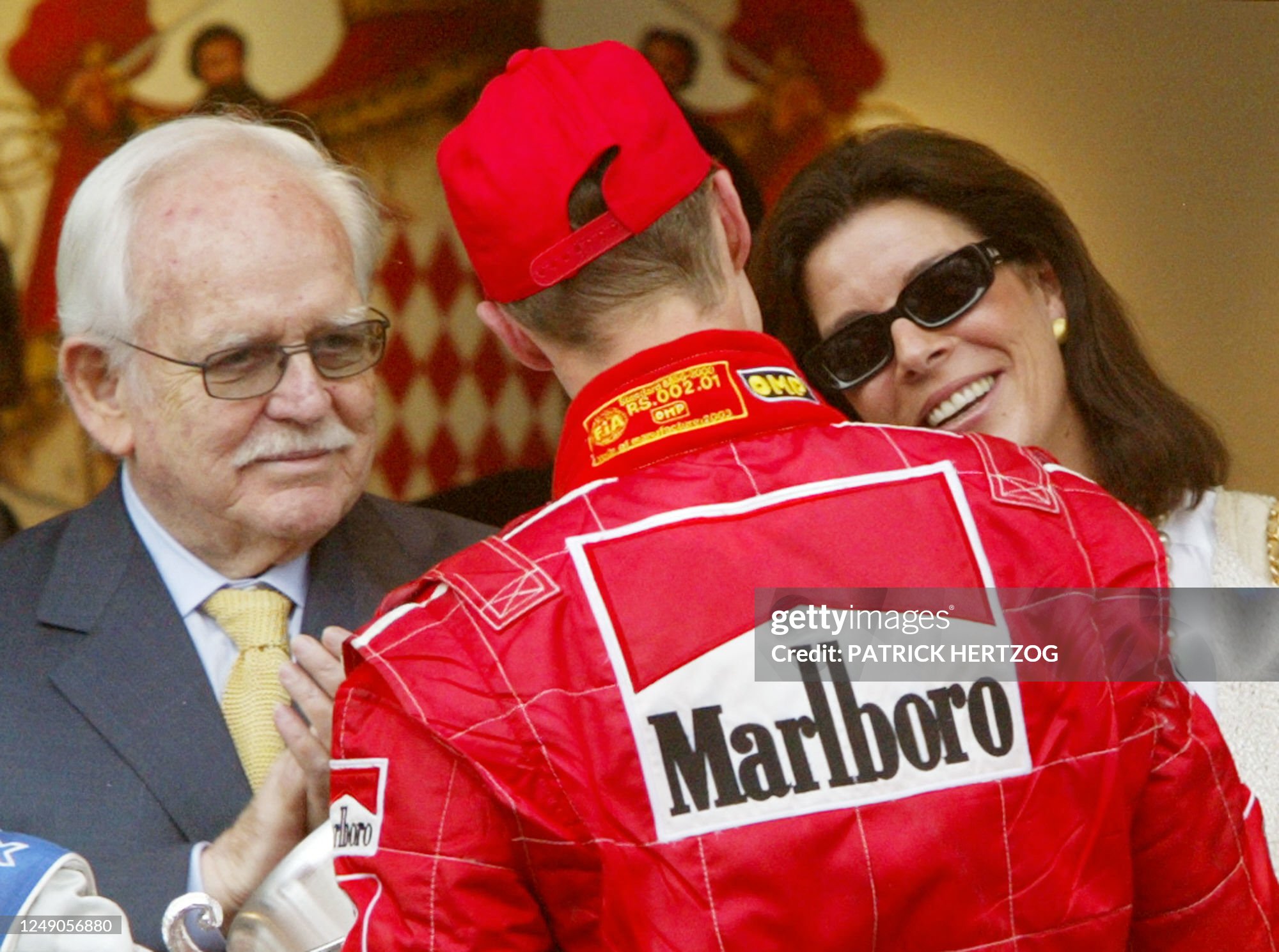
German Ferrari driver Michael Schumacher is congratulated by Prince Rainier III of Monaco and his daughter Princess Caroline on the podium of the Monaco racetrack, 01 June 2003 after the Monaco Formula One Grand Prix. Columbian BMW-Williams driver Juan Pablo Montoya won the race ahead of Finnish McLaren-Mercedes driver Kimi Raikkonen and Michael Schumacher. Photo by Patrick Hertzog / AFP via Getty Images.
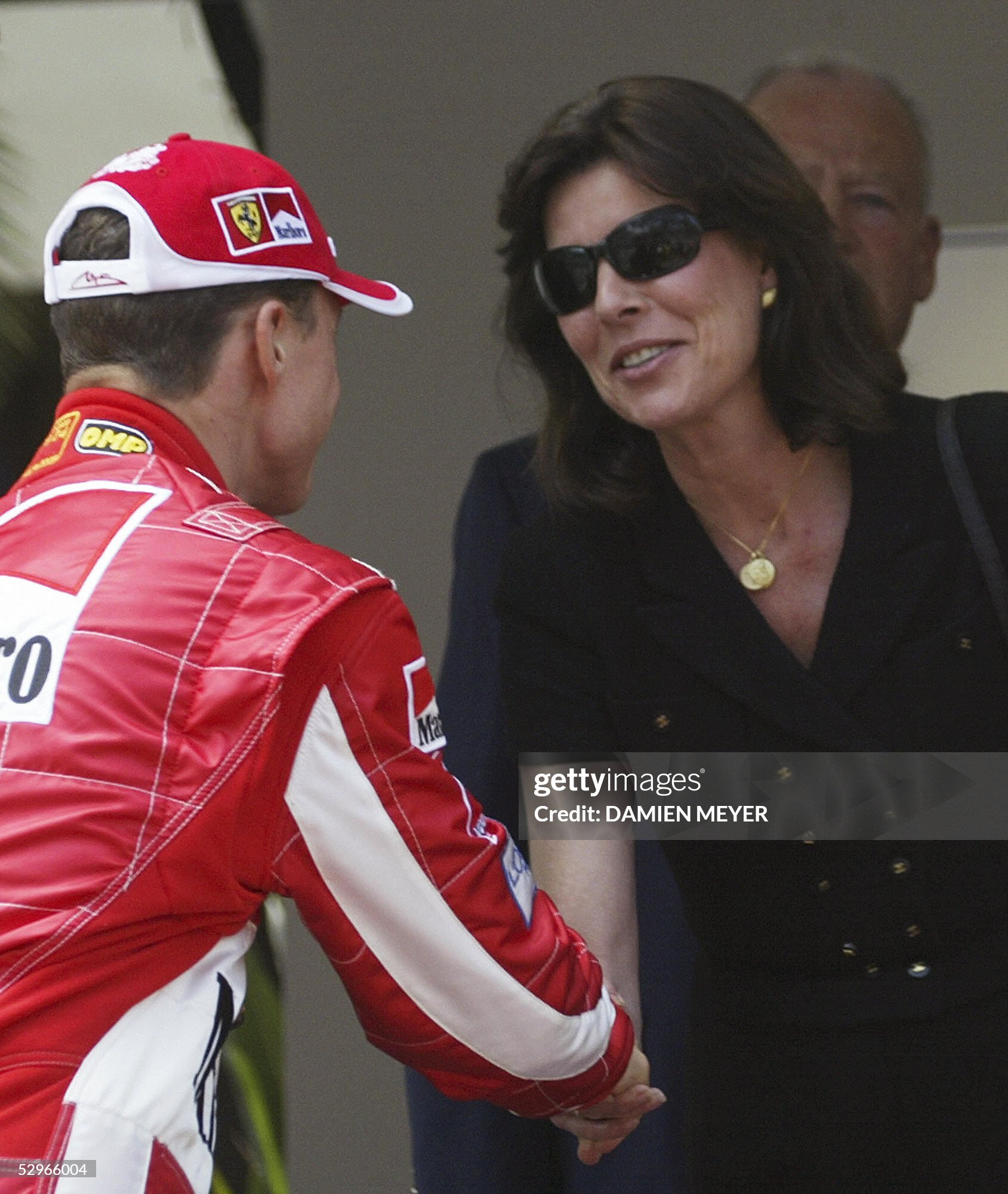
Princess Caroline of Monaco shakes hand with Ferrari German driver Michael Schumacher after a minute of silence in memory of Prince Rainier III, on the start grid of the Monaco racetrack before the start of the Monaco Grand Prix on 22 May 2005. Photo credit should read Damien Meyer / AFP via Getty Images.
At least 1 in 56 people in Monaco is worth more than £23 million and the city has a total worth of £4.5 billion.

Daily Star Online can now reveal some of the most stunning images of just how rich people are in Monte Carlo.
Monaco Grand Prix: F1's GLITZIEST race.
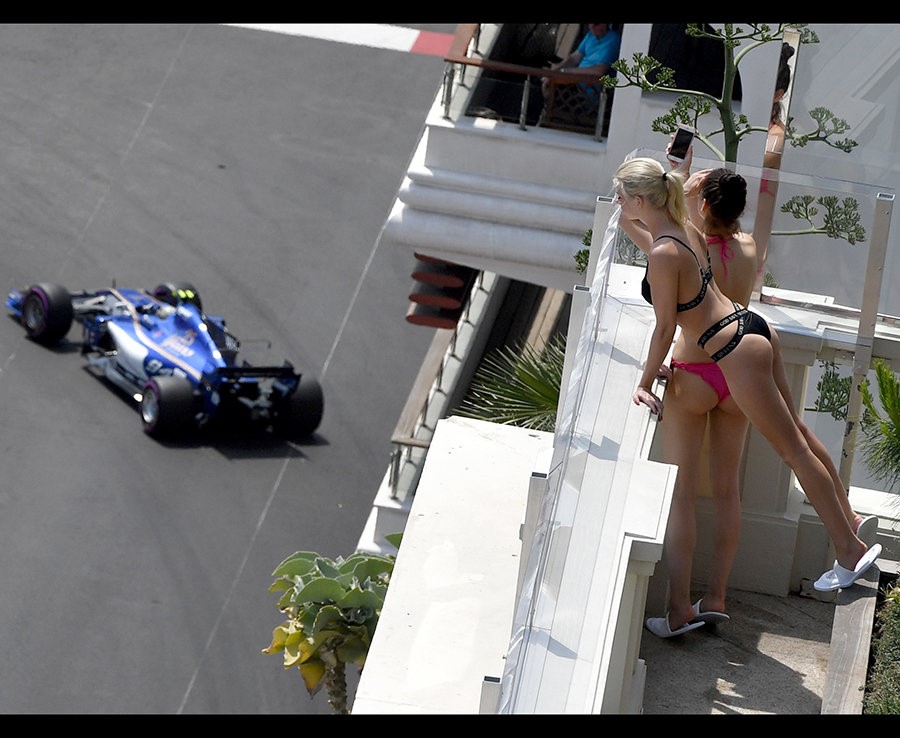
A pair of F1 fans wear sexy underwear to watch the race. Photo by https://www.dailystar.co.uk / AFP/Getty Images.
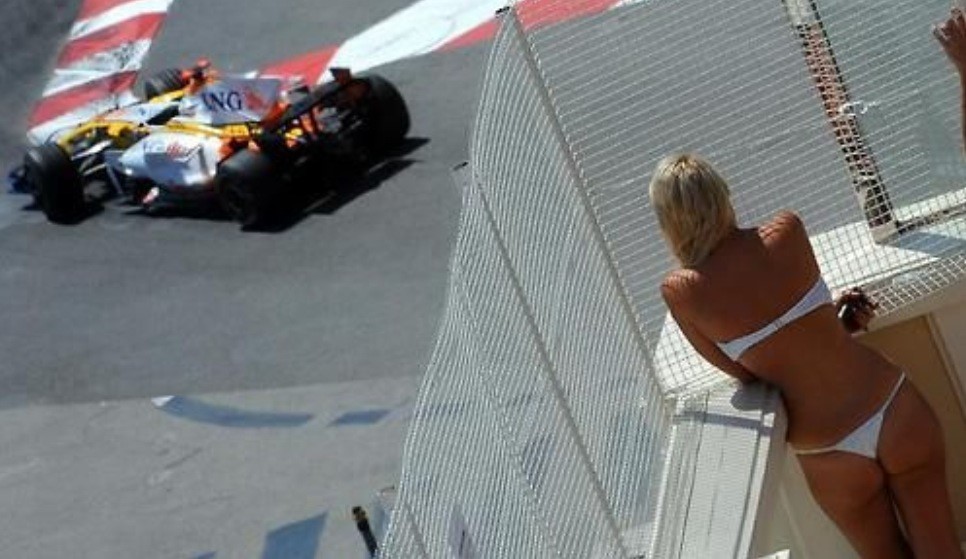
Alonso, Monaco 2008.
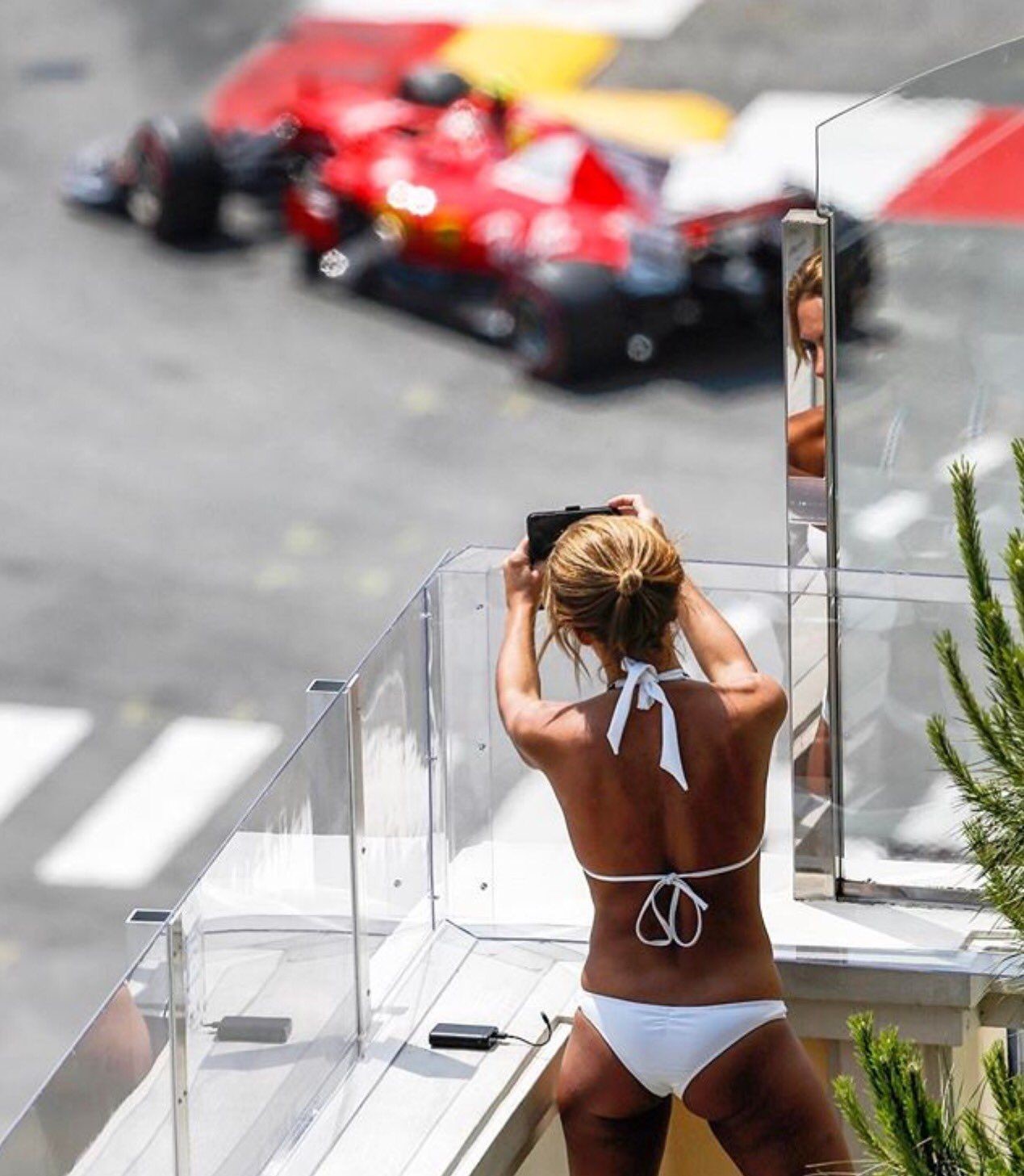
The magic of Monaco, red lips and blown kisses. Monaco, grid girls are gone but Monaco remains.
“Jet-setters, models, singers and F1 drivers”
Fairmont Monte Carlo
Pictures from the streets show supercars worth hundreds of thousands of pounds nose-to-tail in traffic.
One lad showed pictures of his impressive garage – with five sets of car keys, including a Porsche, two BMWs, a Lexus and a Volvo.
And others flashed their motors, with a fella posing with his £840,000 red Lamborghini Reventon.
While a custom matte white and black Rolls Royce Phantom was seen pulling up outside a Chanel boutique.
Cars are just the start though, with one of Monaco’s most defining locations being the harbour which frames the Grand Prix.
Super yachts pack out the harbour on the French Rivera and are some of the prime spots to watch the F1.
One lad showed a picture of himself relaxing in a luxurious yacht surrounded by bottles of champagne.
While another went for a waterski with Monte Carlo in the background.

Monaco's glitz, glamour and girls pictured as F1 hits Monte Carlo.
F1: the drivers and the STUNNING women who make their engines purr
With the 2017 season kicking off, we take a look at the beautiful women surrounding the 200mph playboys.
Five-star hotels fetching you up to £520 a night also fill Monaco.
The Fairmont Monte Carlo even boasts of its exclusivity on its website.
Hotel bosses tell punters they will rub shoulders with “jet-setters, models, singers and F1 drivers”.
And it overlooks some of the most famous corners on the circuit, so racegoers will have a treat.
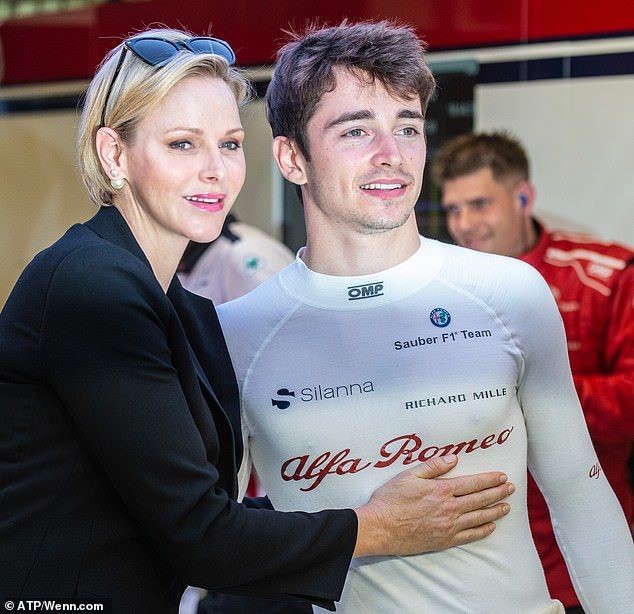
Princess Charlene posed for pictures with Monaco born driver Charles Leclerc, 21, at the Sauber garages in Abu Dhabi.
Plenty of F1 stars also call Monaco their home, with many living in just walking distance of the track.
Lewis Hamilton, Daniel Ricciardo, Valtteri Bottas, Max Verstappen and more all enjoy the filthy rich lifestyle in Monaco.
Retired drivers Felipe Massa and world champ Nico Rosberg also live in the city-state.
Bitter rivals Rosberg and Hamilton also reportedly share the same block of apartments on the waterfront.
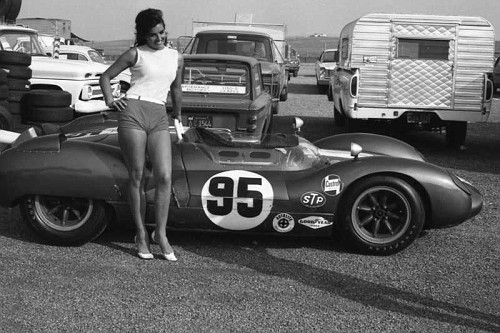
Shelby 1963 King Cobra-Cooper Monaco.
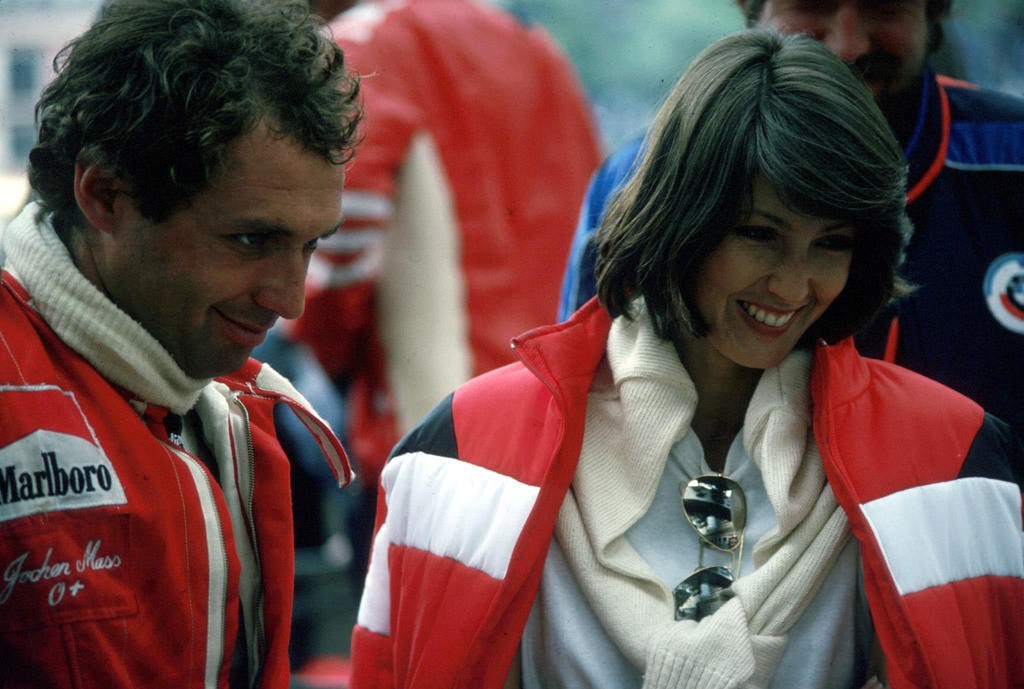
Jochen Mass, Monaco 1977. By f1 history.
Monaco is considered the ultimate test of skill for the drivers despite the decadent luxuries of the city.
Hamilton will be looking to extend his championship over Ferrari rival Sebastian Vettel.
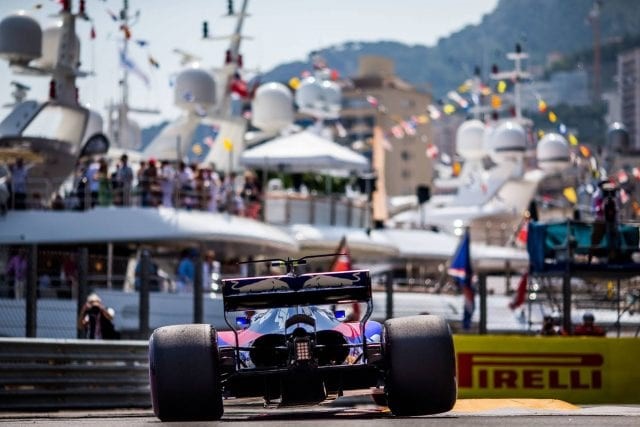
Monaco Grand Prix kerbs. Photo by Scuderia Toro Rosso.
And Red Bull drivers Ricciardo and Verstappen will be looking to make an impact – heading up the practice sessions on Thursday.
This weekend will also see the return of F1 grid girls for the first time since they were axed at the beginning of 2018.
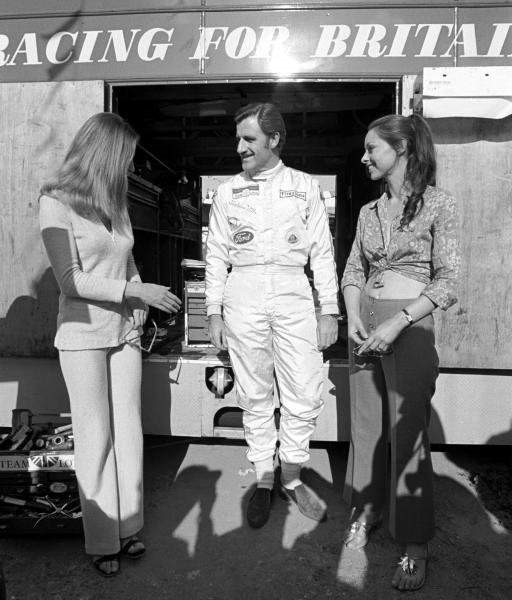
Graham Hill and vintage grid girls in Spain in 1969.
F1 drivers behaving badly. By Adam Hay-Nicholls. 14 March 2019.
Formula One drivers were once the undisputed playboys of the sporting world, with off-track exploits to rival anything they did behind the wheel. But today’s breed are a much tamer bunch – or are they?
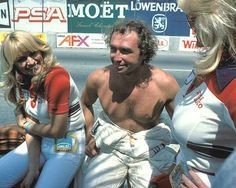
Jochen Mass with two girls.
On the eve of the new Formula One season, racing fans would be forgiven for thinking the sport is not quite as exciting as it was in the good old bad days. But is that really the case? As a paddock insider for the past 15 years, allow me to dish the dirt on the men who live at 200mph.
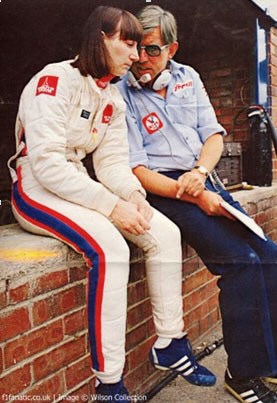
Ken Tyrrell.
Despite their high-octane day job, the present generation of F1 drivers are often compared unfavourably to their predecessors in the rock ’n’ roll lifestyle stakes.
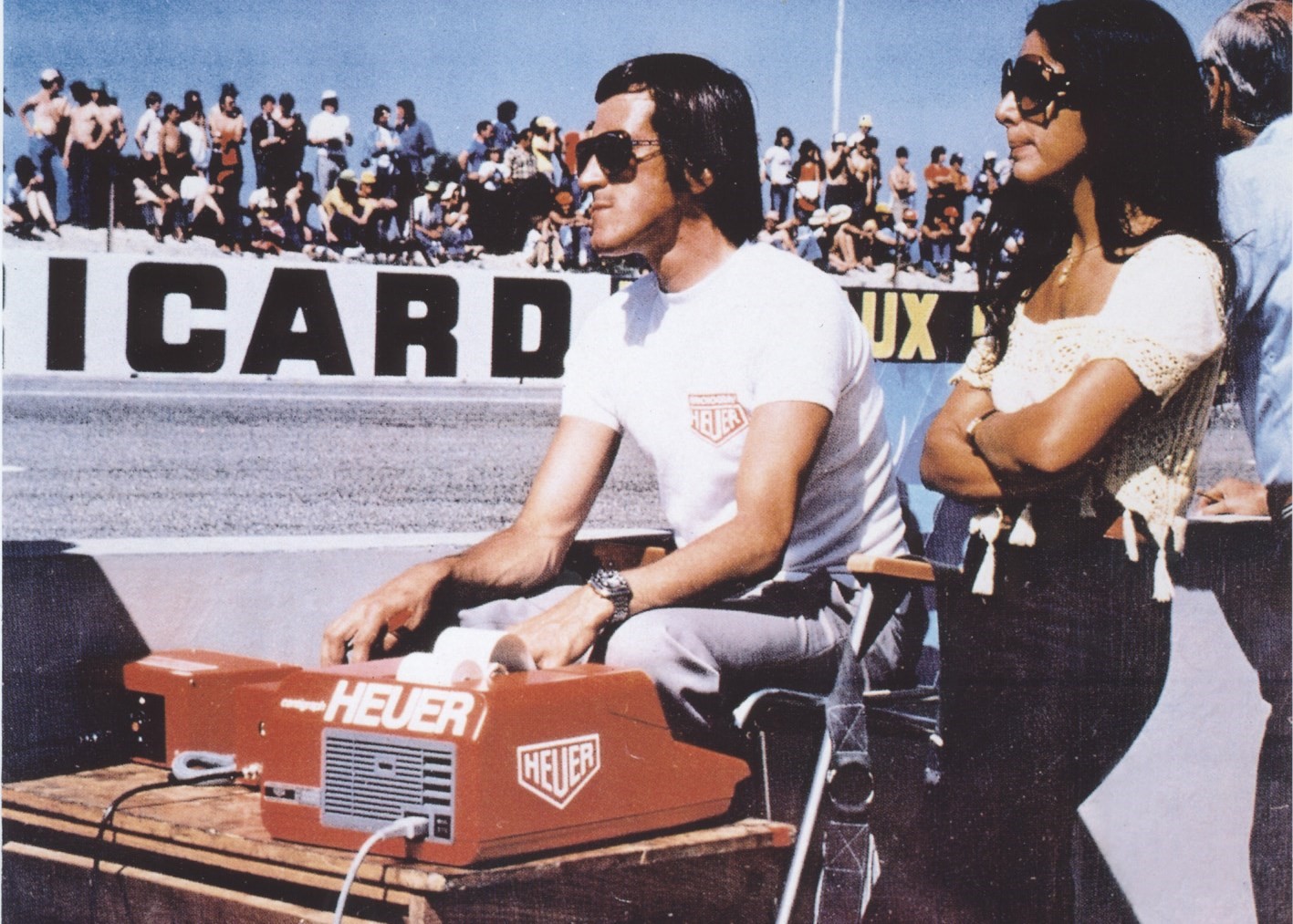
Jean Campiche of Heuer was nicknamed ‘the pianist’.
But while the anecdotes of excess may be in shorter supply, are the current crop really behaving any better? In previous eras – and the one everyone seems to look back on most rosily is the Seventies – every driver wore rebel colours.
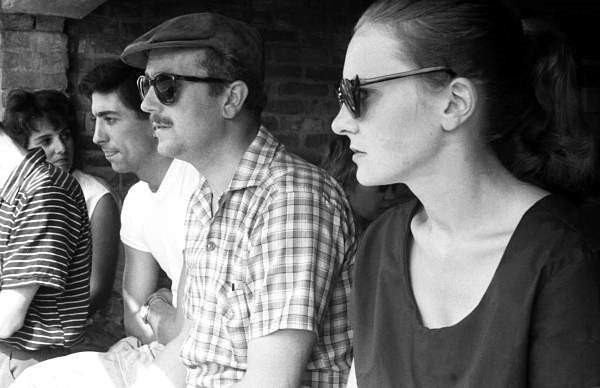
Colin Chapman at Zandvoort in 1960.
Back then, sex was safe and racing was dangerous. They were all barking mad, oversexed and privileged. Because their life expectancy was so short, they wanted to pack as much fun in as they could. Consequences were never considered.
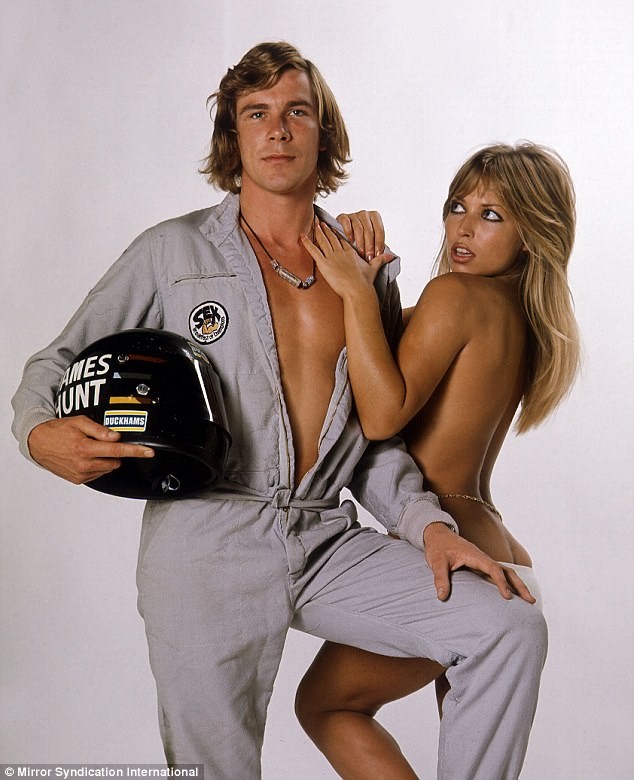
Playboy 1976 F1 World champion James Hunt is pictured with model Sue Shaw. © Mirrorpix.
The biggest tearaway was James Hunt who, legend has it, bedded 33 British Airways stewardesses at the Tokyo Hilton on the eve of winning the world championship. He raced with a badge sewn onto his overalls that read: “sex, the breakfast of champions.” He was also almost permanently under the influence of booze, cannabis and cocaine and this began to affect his driving.
Then there was Alain Prost, who blames losing the 1984 world championship (to Niki Lauda) because he had been up all night before a key race seeing to the needs of Princess Stephanie of Monaco.
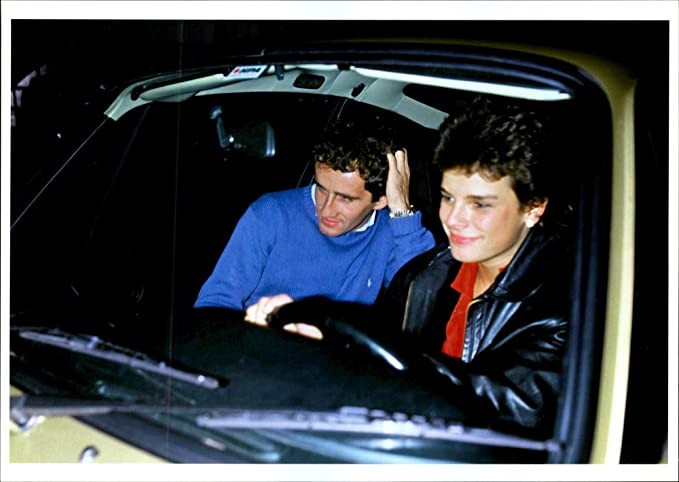
Vintage photo of the Princess Stéphanie of Monaco behind the wheel along with Alain Prost.
Indeed, of all the great F1 drivers of that era, perhaps only Ayrton Senna could be held up as an upstanding role model. Senna was the first really professional driver who just focused on driving and fitness. That’s not to say he wasn’t glamorous – far from it. He had movie-star looks, palatial homes, helicopters and a couple of high-profile girlfriends (including a romance with supermodel Carol Alt, who was married at the time), but none of that ever dented his ruthless obsession with winning. When groupies asked for his hotel room number, he gave them teammate Gerhard Berger’s, who was justifiably grateful.
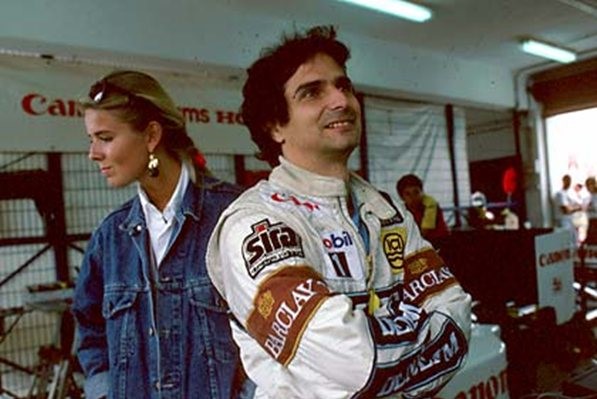
Nelson Piquet.
Back in the Seventies, Eighties and Nineties, even the sponsors were macho and dangerous. Mostly cigarette companies, they got into bed with motor racing because of the sex appeal, danger and testosterone. But as the new millennium dawned, tobacco was forced out and banks, energy drinks and telecoms companies took their place. In short, it all became terribly clean cut.
I recall sitting a job interview in 2003 with McLaren’s PR and marketing chiefs. It came at around the same time a woman had sold her story to a tabloid about sharing a bubble bath with then McLaren driver David Coulthard. This, I told them, was the perfect image to promote their sponsors and that Mr Coulthard should receive some kind of bonus for his efforts. However, the team had been advised by their clients to try to contain all of DC’s playboy exploits. Whatever happened to “sex sells”, I wondered? Suffice to say, I didn’t get the job.
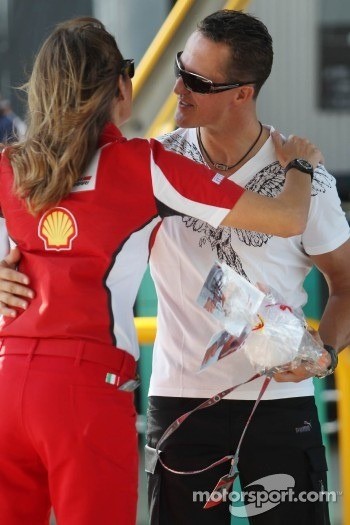
I blame Michael Schumacher. Sure, he’s an F1 legend (and we’re all rooting for his recovery), but his record 91 wins and seven world championship titles are simply statistics.
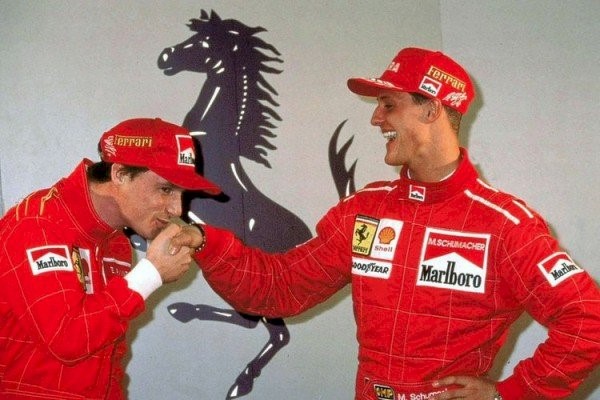
Michael Schumacher and Eddie Irvine.
In the Nineties he ushered in a new era of soulless, unsmiling corporate drivers that all but marked the end of the F1 playboy era. There’s a telling old Fry and Laurie sketch, loosely based on the German, in which Stephen Fry interviews a taciturn young racer. Growing increasingly frustrated with the driver’s lack of enthusiasm, the reporter eventually screams: “you do a job that half of mankind would kill to be able to do and you can have sex with the other half as often as you like – I just need to know if this makes you happy!”
The one time Schumacher did let his hair down, after winning his fifth title in Japan, he stole a forklift truck and threw a fridge through a window. My photographer friend James Moy managed to get the only photos and sold them to the Sun. The headline read: “Schu Trouble Macher”. Rather than tarnish his image it made him easier to relate to, more human.

Rubens Barrichello at the Australian Grand Prix in Melbourne. Shutterstock editorial.
But team PRs now insulate the media so that stories such as these – controversial and of a personal nature – don’t meet a wider audience. Sponsors are attracted to the youth, glitz and inherent risks of F1, yet are uncomfortable when it starts getting a bit too real.
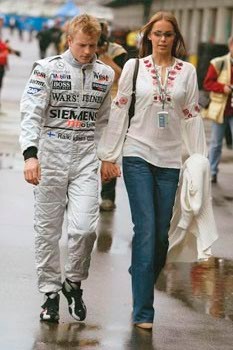
Kimi Raikkonen, who switches from Ferrari back to Sauber this season, first gained tabloid notoriety in January 2005 when he showed a London lap dancer the real reason he wears a six-point harness. Fuelled by vodka, I recall Kimi being caught in the ladies’ loos at a Red Bull party I attended in Shanghai that same year. His chaperones carried him back to his hotel and practically strapped him to the bed. They closed the door and walked down the corridor only to have their route blocked by a room service trolley bearing: “twenty Heinekens for Mr Raikkonen.”
These events look rather less laudable through the post-Weinstein prism, but fans love his couldn’t-give-a-toss attitude. The Schumacher era had produced drivers who were robotic and, frankly, boring. We yearned for the characters of the Seventies, like “Hunt-the-Shunt”.
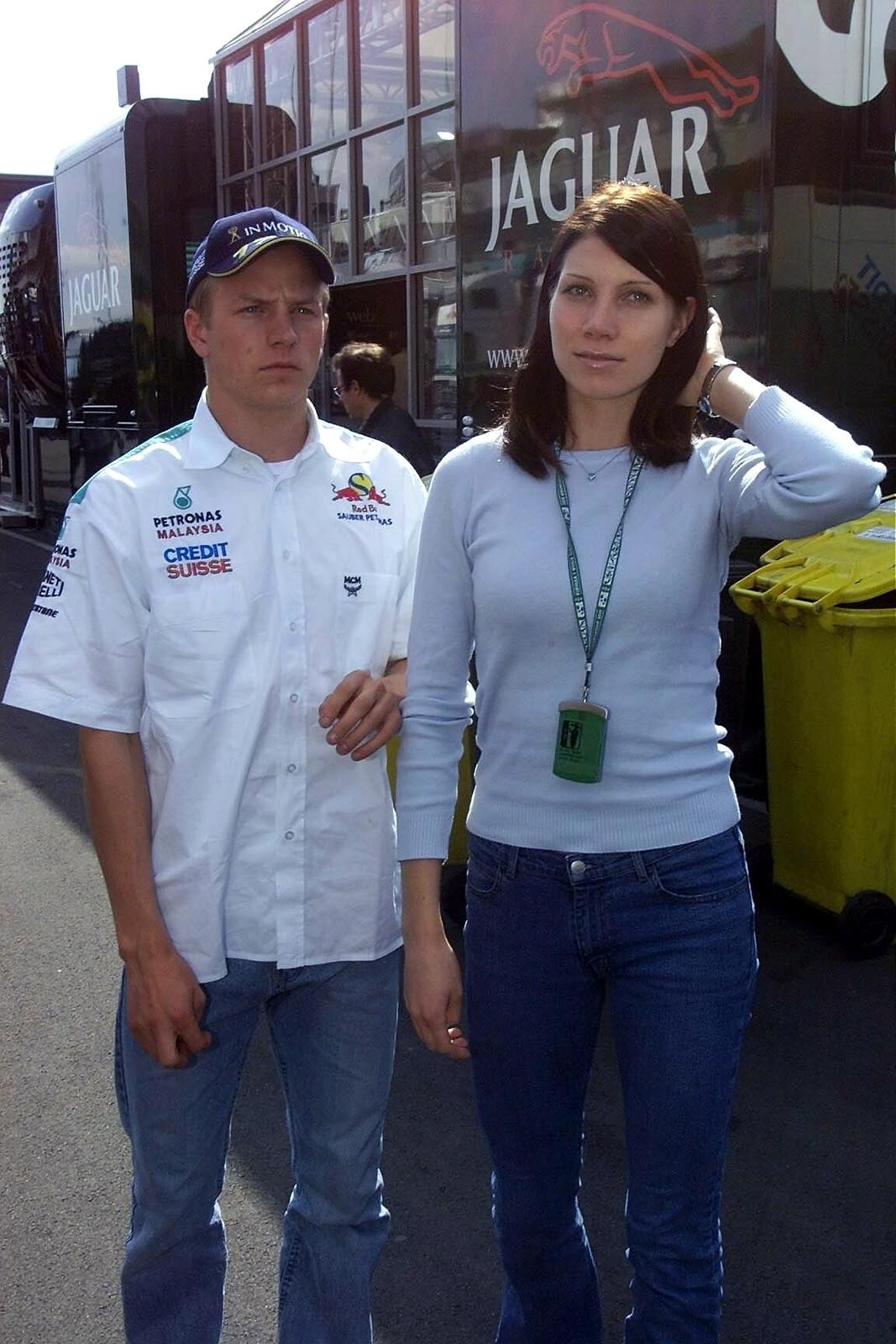
Kimi, too, is seduced by that period. He once entered a speedboat race dressed as a gorilla, so as to preserve his anonymity and chose “James Hunt” as his nom de guerre.
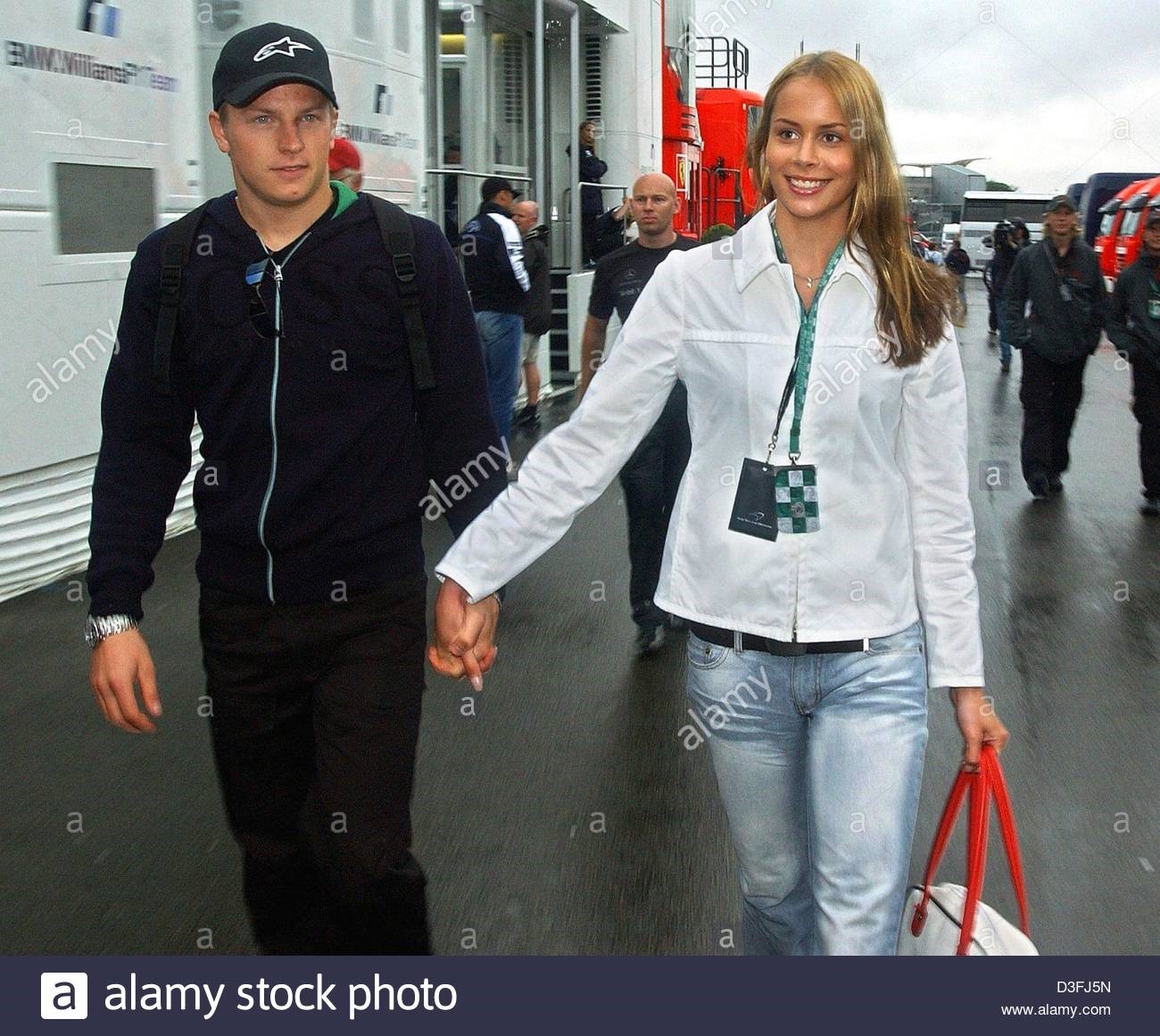
Finnish Formula 1 driver Kimi Raikkonen walks hand in hand with his girlfriend Jenny Dahlmann past the pit stops at the F1 racetrack in Silverstone, UK, 17 July 2003.
Kimi loves driving, but he hates doing any kind of PR. This is obviously not ideal when there’s £80m worth of stickers on his car, but the lack of lip service is viewed as refreshing. Shrugged silence seems to make him all the more magnetic.
His on-track rivals are perfectly articulate, when they can be bothered. But you sense they’re reading from a script and stage-managed by their uniformed cronies, who will blacklist journalists if they ask a question that’s not suitably bland. This is sport: you want to see anger, conflict and joy. It’s also fantasy: these guys are doing what every young man dreams of – racing cars, earning millions and getting their pick of the high-heeled trophies. Yet seldom do we see them unguarded. And never do you hear about Champagne-soaked ménage à trois aboard trackside yachts in Monte Carlo, which is a shame because they do happen.
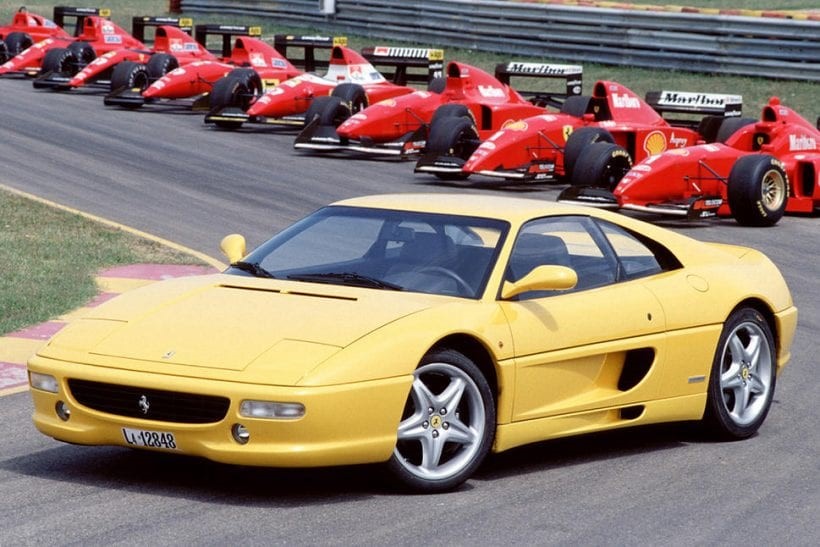
Button got the stylish- Ferrari 355 GTS when he started off in F1 and he was merely 19 years old. The GTS sounds incredible and Jenson enjoyed driving it in Monaco for a few years. The 8 cylinders under the hood of this Ferrari boasts of 381 hp/8250 rpm and can reach up to a speed of 295km/h. This is also one of his personal favorites.
Jenson Button came in for a lot of flak when he arrived in F1 in 2000. The 20-year-old purchased a yellow Ferrari 355, moved to Monaco, bought a yacht and traded up girlfriends. Too many distractions, warned the critics. Team principals didn’t take him seriously, thinking he lacked commitment. But when Button was finally given a winning car to drive, he was able to prove them wrong.

Jenson Button and Jessica Michibata.
On the eve of the 2009 Australian Grand Prix – his championship winning season – in a display of his work ethic, Button went on a self-imposed sex ban with lingerie-model girlfriend Jessica Michibata ahead of the race. Half an hour after the chequered flag they made up for lost time in the Brawn GP hospitality unit. Interview opportunities were postponed.
The Button-bashing served as a warning to many of the youngsters coming through the ranks: don’t be too flash. And if you must have a G450 and an island, try to keep it out of the papers.
Most drivers these days start racing before they’ve hit double digits. They miss out on a normal childhood. Few emerge well-rounded. Lewis Hamilton is a prime example. The sport’s first driver of colour, he was signed to McLaren’s young driver programme at the tender age of 12, groomed to be a racing superstar from that moment on, with the media taking a strong interest.
A little while ago, as we drove around East London in the back of his chauffeured Maybach, I put it to Lewis that his upbringing was a bit like The Truman Show, under an intense public spotlight. “That’s a cool interpretation, it was a bit like that,” he agreed. “I was groomed and restricted and felt that was the only space I was allowed to be in”. He was surrounded by PR handlers, adhering to the corporates and walking a press tightrope where they build you up then knock you down. He had to wear what he was told to wear, keep to the key messages, “look like this and behave like that” and be, ultimately, who McLaren boss Ron Dennis – the man who a ten-year-old Lewis first approached at an awards dinner and pledged he’d race for one day – wanted him to be. It was the opportunity of a lifetime, no question, but it also restricted his personal development. It bound and clipped him like a bonsai tree, stunting his growth.
“For me, it was all about racing. I was generally quite shy as a kid.” So, it took everyone by surprise when in September 2012 Lewis announced he was leaving McLaren for Mercedes’ team. “It was only then that I started to make my own decisions in life.” In the seasons that followed, this proved an absolutely inspired move. McLaren sunk into irrelevance. Mercedes, on the other hand, provided the car that would take Lewis to his second, third, fourth and fifth world titles. But, for me, the most striking thing about his time at the three-pointed star is how he has blossomed as a character. “I started to take down some of the shields that had been put up around me.”
Lewis has discovered who he is. “I’ve been finding out who I’m comfortable being.” He is embracing his background, his future and his off-track interests. He is out there living the life of a multimillionaire celebrity and he’s not afraid to show it. In the process he’s building a brand, he’s reaching an audience that would never normally tune into motor racing but might to see him and he’s annoying jaded F1 purists who think racing drivers should stick to the Grand Prix Ball, rather than the Met Ball. The trips to Barbados, LA, New York and his Colorado ranch (known as the Megazone, with tracks for high-speed buggies and bikes) between races in his custom red and black Challenger jet, sometimes with Rihanna, Rita Ora, Winnie Harlow or Nicki Minaj by his side, make some question his commitment, but the fact is Lewis doesn’t sleep. He has more energy and drive than the rest of the grid combined. He loves nothing more than proving people wrong.
“It doesn’t matter what the pundits say – ‘Oh, he’s off travelling and partying’ – I turn up and I win. Don’t talk to me about what I can and can’t do. I define who I am and I’m not defined by what people say. I might be in ten different countries in a week, but I’ll turn up at the track and kill it.”
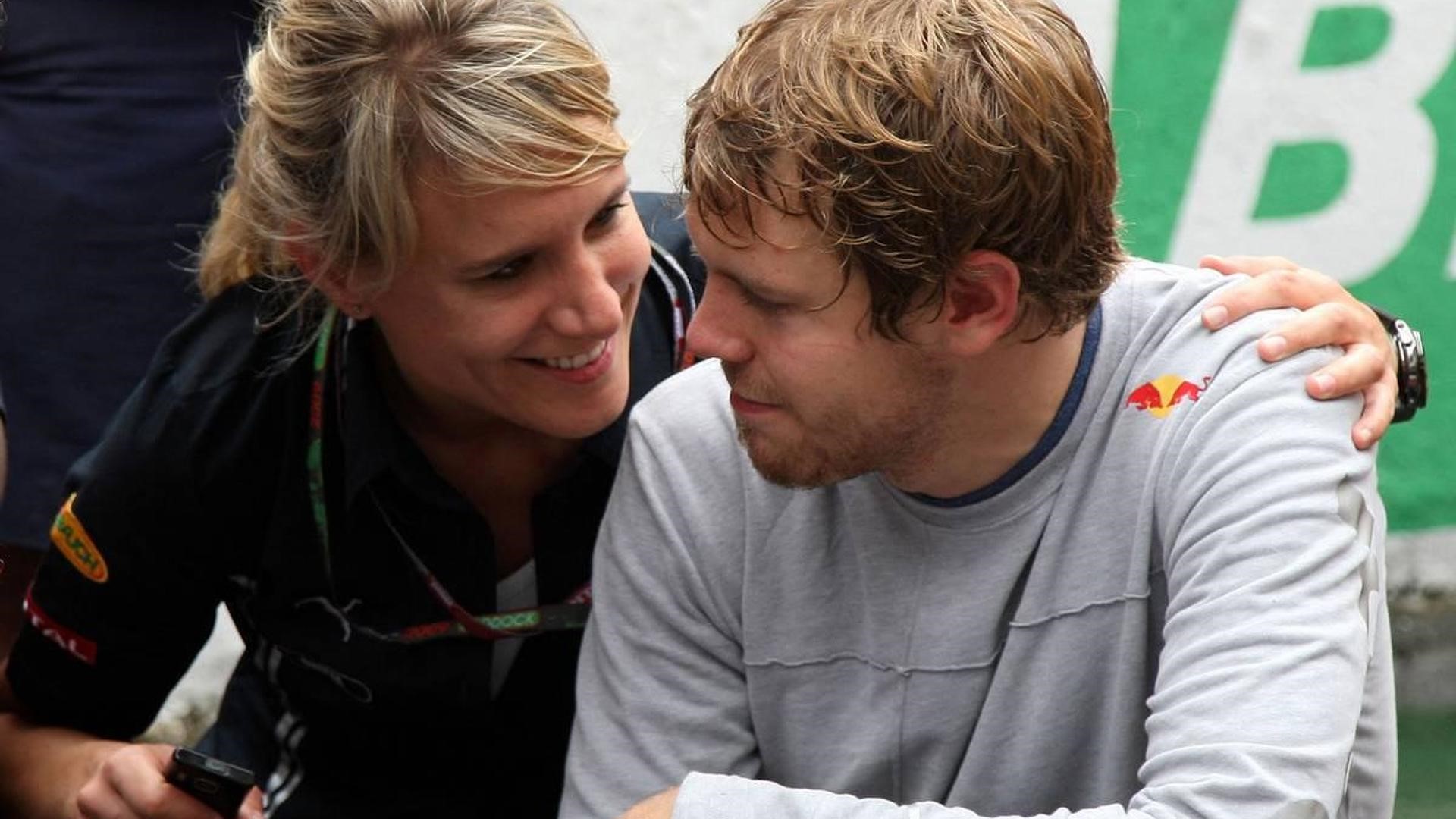
Sebastian Vettel and his press officer at Red Bull racing Britta Roeske in 2010.
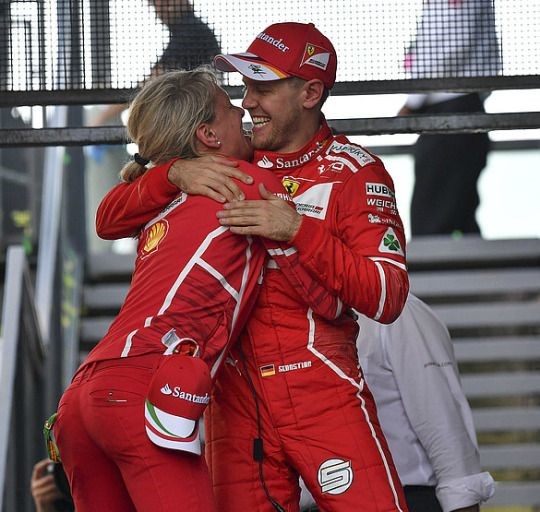
Sebastian Vettel and his press officer at Ferrari Britta Roeske.
His championship foe, Sebastian Vettel, is an altogether different character and it’s this, as much as their natural speed, that makes theirs a rivalry for the ages. Vettel arrived in F1 aged 18 and I immediately warmed to his easy-going charm and sense of humour, which he’d picked up in England racing in the lower formulas.

But he still looked like a choirboy and was just as innocent. He turned up at the Pacha nightclub in Sao Paulo in 2007, his debut year, wearing a black turtleneck and looking like an adolescent James Bond. He had his eye on a girl there but was so nervous about approaching her that his trainer and I had to physically drag him over. Not long afterwards, having won his first grand prix, a reporter asked him if it was the best day of his life. He replied: “You obviously weren’t there when I lost my virginity.” I reckon I probably was.
Ultimately, it’s difficult to find a balance between pleasing the sponsors, appealing to the fans and living your life. With the pressure that comes from having 450 staff and £200m of investment dependent on you, plus engineering meetings, press junkets and demanding fitness regimes, you can’t go boozing and inviting girls back to your presidential suite until you’ve got the race out of the way – that is, unless you’re a test driver. The reserve racers have the best deal of all; the sex appeal of driving F1 cars for a living and a license to stay out late because they don’t work Sundays.
I was in a cave-like booth at the Zouk club in Kuala Lumpur late on a Saturday night once when a “third driver” stumbled in, tripped and landed on a table of 20 Champagne flutes. God knows how he explained all the cuts to his physiotherapist.
F1 still knows how to let its hair down, but it’s also a proper job for these guys. The public wants to see heroes who live fast on and off the track. They still do, it’s just you rarely get to read about it.
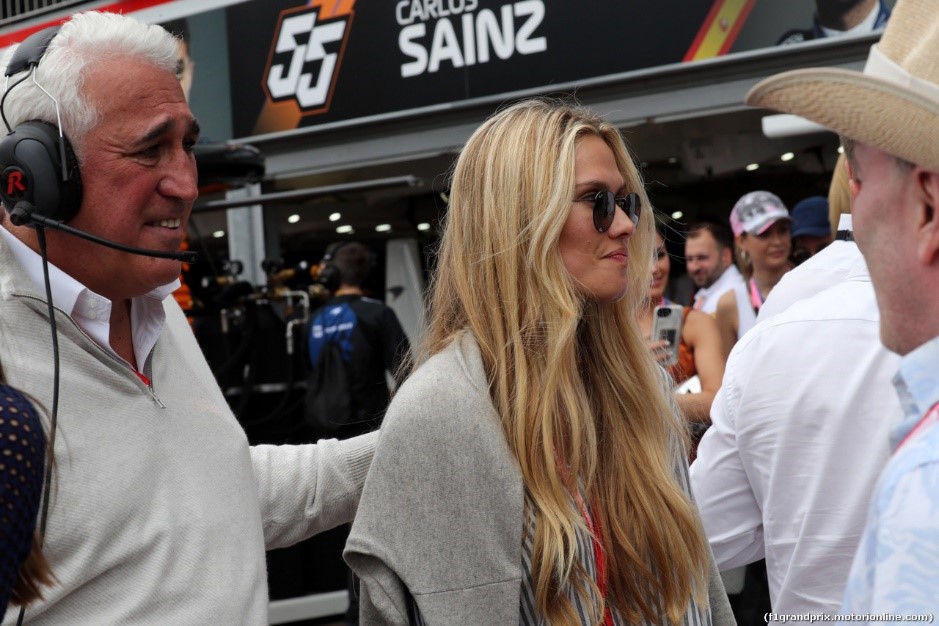
Lawrence Stroll at the 2019 Monaco GP.
Billionaires’ sons only? Mark Hughes on money and talent in F1. Dec 3 2020. By Mark Hughes.
New Haas 2021 signing Nikita Mazepin made an interesting point when questioned earlier this week about whether Formula 1 is just becoming the playground for sons of billionaires.
There are three such drivers on the grid, he countered, but 20 drivers in total. And even those three have very good racing pedigrees.
Rich kid, real talent, or both – who is Haas driver Mazepin?
The money will ease your passage but you still have to deliver, in other words.
Let’s not forget that one of the greatest drivers of all time, Ayrton Senna, was the son of a very rich man. The talent and the money are not mutually exclusive.
All that said, it’s quite interesting that the last four pre-eminent drivers in F1 – Lewis Hamilton, Sebastian Vettel, Fernando Alonso and Michael Schumacher – are all from very ordinary backgrounds.
Hamilton’s father Anthony famously took on extra hours as a British Rail computer engineer as well as part-time jobs such as erecting estate agent ‘for sale’ boards to keep Hamilton karting. The forward momentum of Hamilton’s career was only ensured when Ron Dennis famously stepped in to back him from the age of 13.
Vettel’s father Norbert was a carpenter/roofer with a big interest in motorsport and that enthusiasm was passed onto his young son – who monopolised the kart that was supposed to be a present to be shared between Sebastian and his sister.
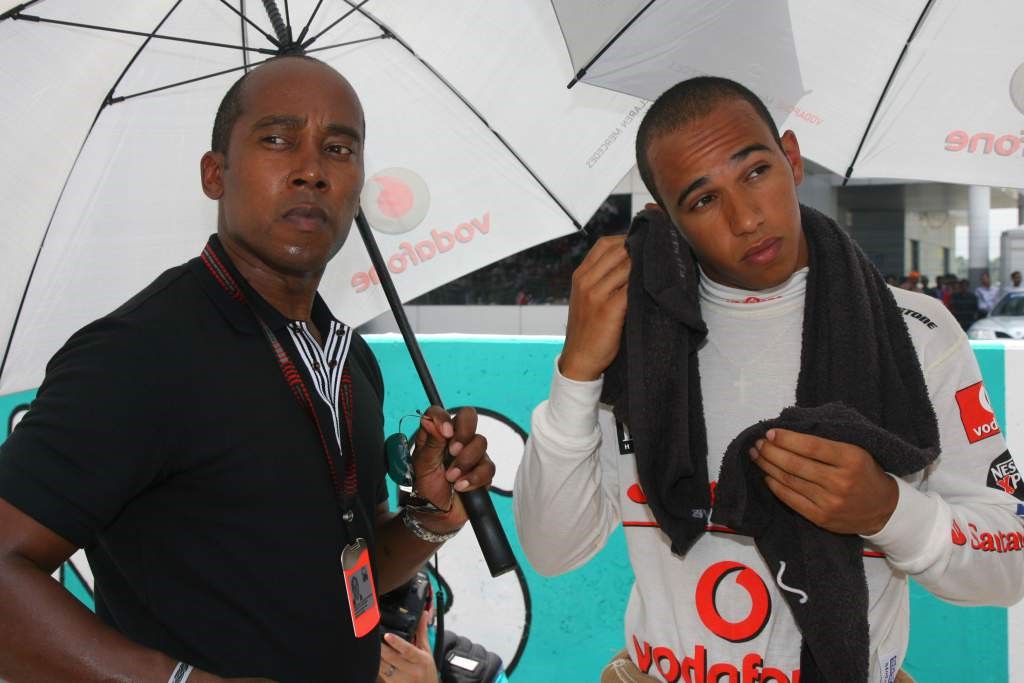
Lewis Hamilton with his father.
As with Hamilton, Vettel’s karting successes were only converted into the budget required in the car racing junior categories by external backing, in this case from BMW.
Fernando Alonso’s father was an explosives expert working in the quarries of Oviedo. His mother worked as an employee in a local store.
There are striking parallels here with Vettel’s career, in that Alonso’s father, Jose Louis, was a keen motorsports fan and bought a kart that was supposed to be shared between son and daughter!
Alonso’s obvious talent allowed Jose Louis to raise backing from a kart manufacturer. In this ad-hoc way, with just racing industry sponsors, he got onto the junior rungs of car racing, which allowed him to be noticed by Flavio Briatore.
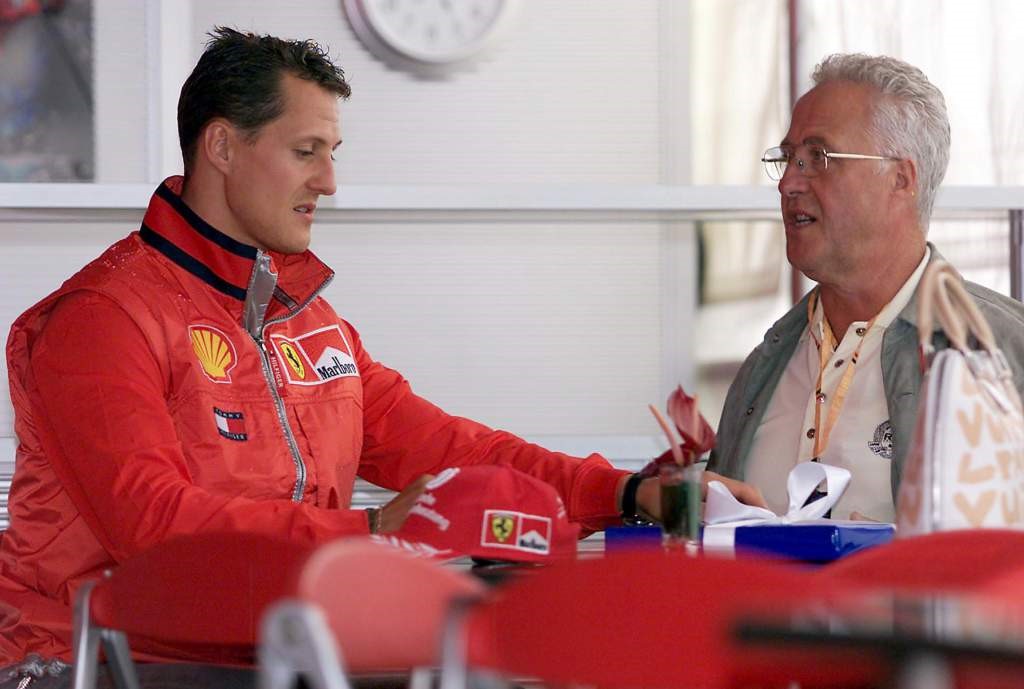
Michael Schumacher’s father Rolf (pictured above with Michael in 2001), a bricklayer by trade, was another karting enthusiast dad. He volunteered at the local track, creating the opportunity for Michael to sample the karts there.
Schumacher’s early career was funded by various local businessmen. His initial break into racing was set to be funded by Ford Germany but Mercedes came knocking.
Senna didn’t initially need to worry too much about sponsors – although he did infamously ‘retire’ at the end of his victorious British Formula Ford season in 1981, after becoming frustrated that he could not raise the budget required for an F3 drive. The parental purse strings clearly only extended so far.
He went back on the retirement plan and returned for a season of FF2000 in ’82, the launchpad to his famous F3 season of ’83.
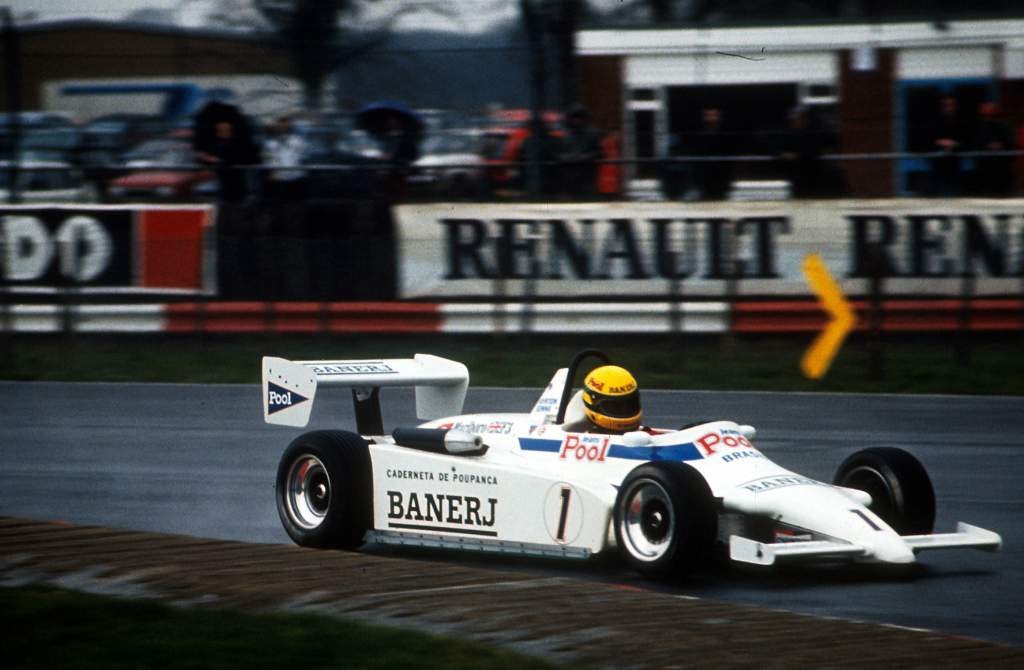
Senna did bring sponsorship money with him, despite his obvious raw ability. But, significantly, he felt able to turn down McLaren F1 chief Ron Dennis’s offer of backing of his F3 season as he didn’t want to be beholden to any particular team.
Regardless of the source of his backing, no-one would deny the scale of Senna’s talent. It was obvious from his first races in Formula Ford. There is no rule which says the ‘special ones’ cannot be from privileged backgrounds.
Here are the backgrounds of the rest of the current grid:
Valtteri Bottas – Father had a small cleaning company, mother was an undertaker.
Max Verstappen – Son of ex-F1 driver Jos and quick karting racer Sophie Kumpen.
Alex Albon – Son of sometime racer Nigel and Thai businesswoman Kankamol.
Sergio Perez – Son of a fairly wealthy businessman and politician.
Lance Stroll – Son of billionaire businessman Lawrence.
Daniel Ricciardo – Father ran a medium-sized transport company.
Esteban Ocon – Son of Laurent, owner of a small local garage.
Lando Norris – Son of wealthy pension manager Adam.
Carlos Sainz Jr – Son of legendary world rally champion Carlos.
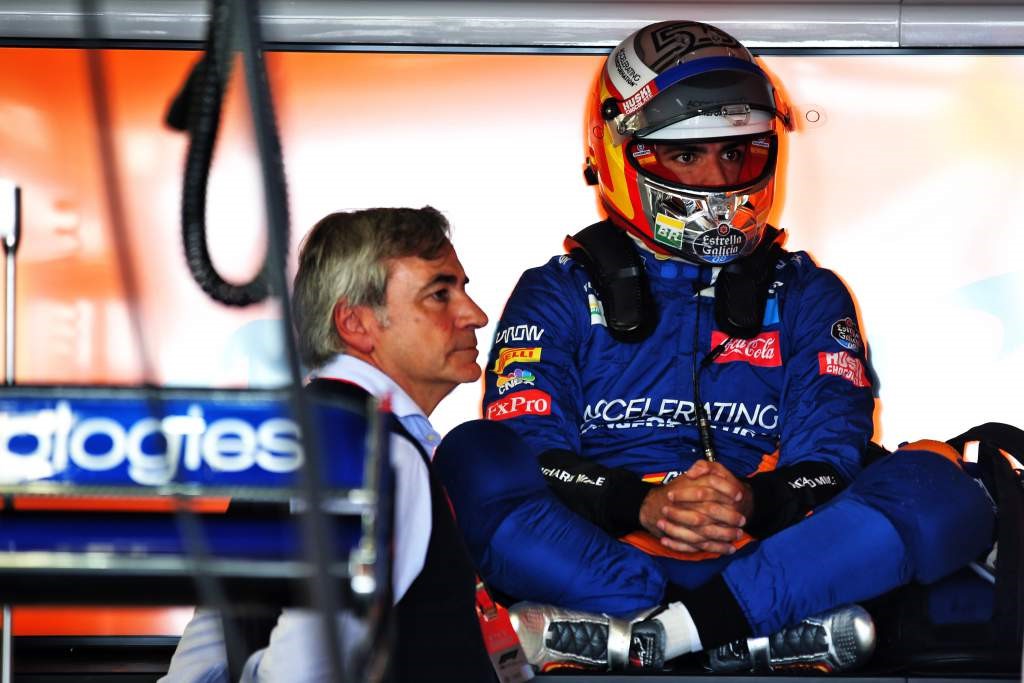
Pierre Gasly – Born into a motor racing family, but not believed to be a wealthy one.
Daniil Kvyat – Son of Vyacheslav, a financial director with a Russian energy company.
Charles Leclerc – Son of the late Herve Leclerc, former F3 driver. Not believed to be wealthy.
Kimi Raikkonen – Modest family background, father a forestry worker.
Antonio Giovinazzi – Modest family background, father a salesman.
Kevin Magnussen – Son of ex-F1 driver Jan.
Romain Grosjean – Son of a bank employee with a motorsports interest.
George Russell – Son of small business owner Steve.
Nicholas Latifi – Son of billionaire businessman Michael.
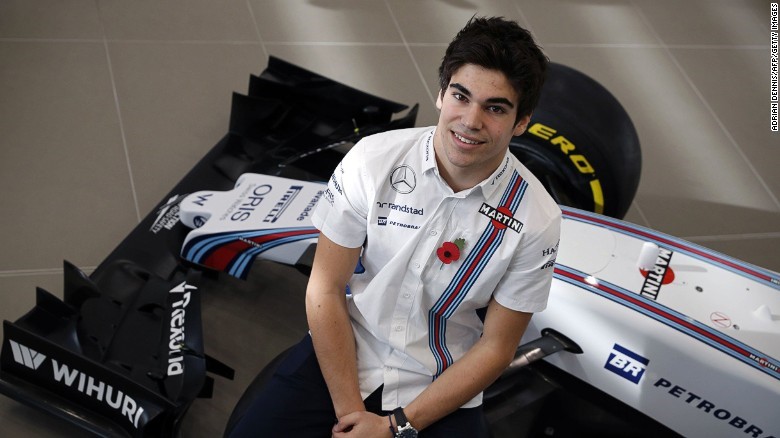
Lance Stroll. Getty images.
Stroll, Mazepin, Latifi: drivers sons of billionaires among private jets, cooks, suites, Ferrari collections and private circuits. To build their careers they have spent huge figures, buying shares or entire teams. With the best coaches and world champion cars at their disposal. By Redazione Sport. January 14, 2021.


Max Chilton, seen here with girlfriend Chloe Roberts.
A new trend
F1 has always been an expensive sport: the difficulty in finding funds has cut out so many potential talents. The paying drivers, on the other hand, have always existed, their presence depended (and still depends, especially in the minor categories) on the amount of money they managed to bring into the coffers of a team, they were often seen in some GPs and then disappeared. In recent years, thanks to the astronomical cost of hybrid F1, a trend has emerged: drivers have arrived, sons of billionaires, who grew up from an early age with the desire (sometimes more than their fathers) to make a career in motoring. They spent millions on training, renting entire tracks just for them, they were followed by former engineers of the top teams hired as "personal trainers". And, in the end, there are those like Lance Stroll who managed to create a rich curriculum: 78 Gp, 3 podiums, a pole and 142 points scored. To confirm that the basic talent was there. Much less brilliant Nicholas Latifi (his father is a king of agribusiness), while awaiting the debut of Nikita Mazepin, heir of a petrochemical empire. People who, when traveling to a GP, sometimes book three suites in different hotels and then choose the best one on the spot. And that, before the pandemic, sent planes to retrieve starred chefs to prepare dinners for guests.
Stroll, the forerunner
Lance Stroll, 22 years old, off track also has a magic ingredient for wannabe racers -- the support of his father Lawrence. Lance races with Aston Martin, along with Sebastian Vettel.
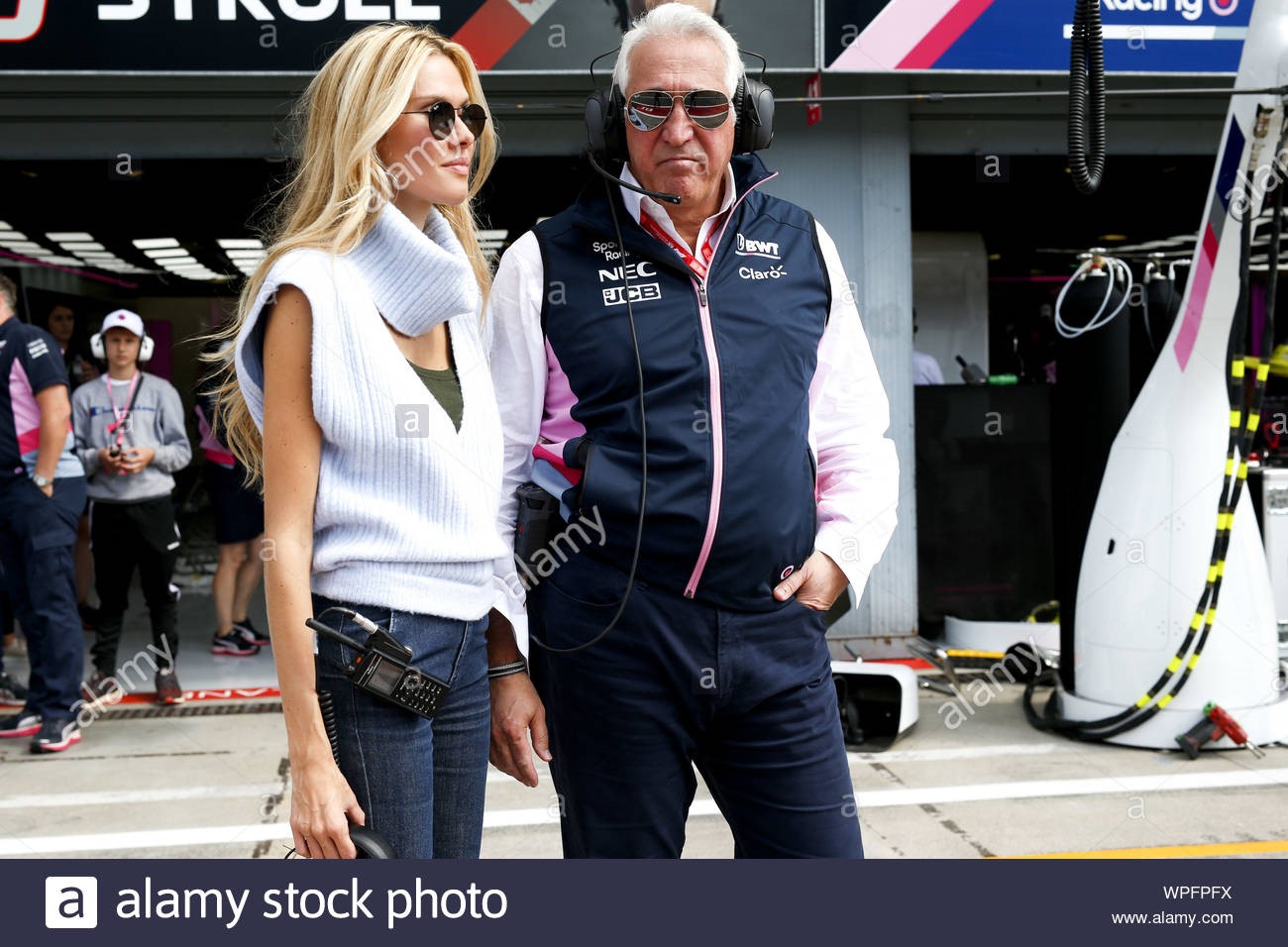
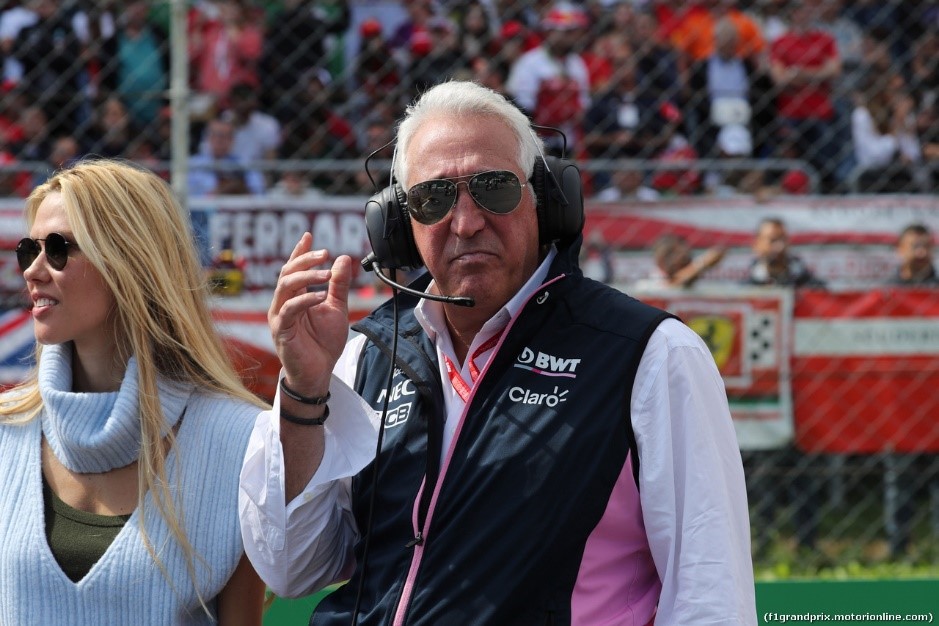
2019 Italian GP, Lawrence Stroll, team Racing Point.
It is the team of his dad Lawrence, a Canadian billionaire who made his money in fashion retail: he was the owner of Tommy Hilfiger, Michael Kors and Asprey. He was an importer of Ralph Lauren and, according to Forbes, is worth $ 2.4 billion. And he recently bought a stake in the James Bond car maker. Passionate about F1, he got in touch with the racing world through sponsorships. Lance passed through the Ferrari Academy in Maranello and was long followed by Michael Schumacher's former track engineer Luca Baldisseri during his approach to F1 and his debut with Williams in 2017. Stroll junior shows very little of his private life, on social media he only posts photos of races and training. He does it to keep the profile low and to try to get rid of the luxury recommended label. While traveling with a personal private plane, the father in fact has one of his own.
Stroll: the mega yacht, the private track, the Ferrari collection
Stroll senior has concluded very important negotiations aboard his yachts. In 2017 he bought himself a 96-meter yacht, which kept the same name as the previous boat: «Faith». It has 9 guest cabins, a 42,000-liter pool with a transparent floor - where a spectacular bar can be seen downstairs - and the crew can reach 34 people. It costs about 200 million dollars and management costs, according to nautical sources, amount to 15 million a year. There are also rumors that the "Faith" would be sold in 2020 to Michael Latifi, father of Nicholas, Williams driver.

The Faith.
The track in Canada
Lawrence Stroll is also the owner of the Mont-Tremblant circuit in the mountains of Quebec. It was bought in 2000 and refurbished. This is where Lance started driving and learned driving techniques on the slimy asphalt, his strong point. The track is named after Michael Schumacher. But the boy, to learn, has carried out several private tests renting the racetracks where Formula 1 races.
Stroll Sr. also collects vintage Ferraris (in 2013 he bought an extremely rare 275 GTB / 4 Spyder at an auction for 27.5 million. In his garage there is also a Mercedes W196 driven by Fangio) and sparked his son's love of racing when he bought him a kart for his fifth birthday.

The Mont-Tremblant circuit.
Mazepin
Nikita Mazepin, 21, made his Formula 1 debut last year with Haas. As a teammate he found Mick Schumacher. He is the son of Dimitri Mazepin, head of a petrochemical empire, Uralchem, also active in the mining sector: he is the 52nd richest man in Russia (he was born in Belarus, in Minsk). Personal wealth: $ 1.5 billion, according to Forbes. He brought important money to Haas through sponsors. Mazepin senior for years also directed a sovereign fund on Russian real estate and, for services performed during the war in Afghanistan (he was an interpreter), he was decorated with the medal for courage.
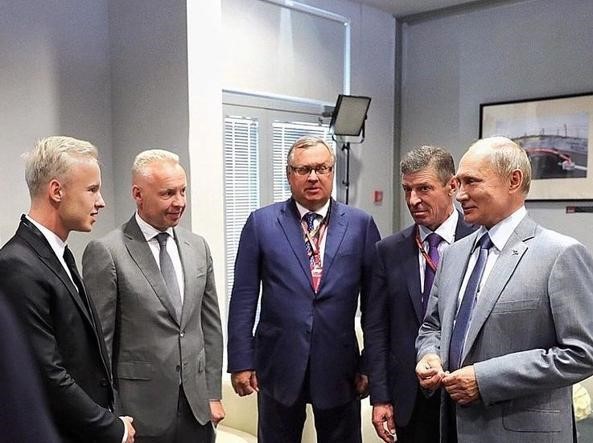
Mazepin with his father and Russian President Vladimir Putin.
Nikita and Hamilton's Mercedes "for rent"
Mazepin is fast, but he carries a reputation as a brawler. In 2016, in Formula 3, he was the protagonist of a fight with Callum Ilott (current Ferrari development driver) and was disqualified. Even in Formula 2 he was often penalized for maneuvers beyond the limits. Like Stroll, he too had infinite means at his disposal to build his career. He drove the 2018 Mercedes (that of Hamilton's fifth title) in private tests on various circuits, the rental price was around one million per day. And he did laps in the 2020 one in the pre-season tests in Barcelona.
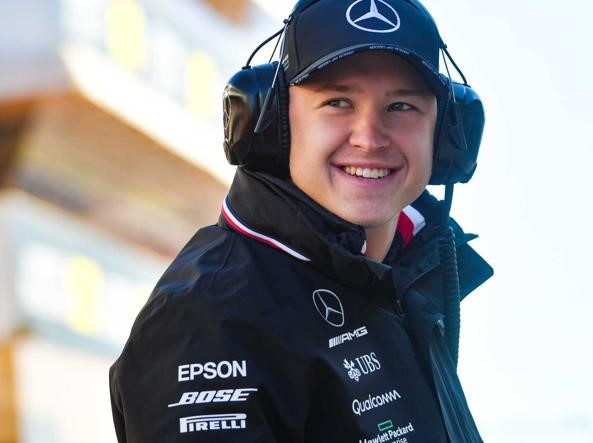
Latifi, the king's father.
Cameras are very seldom on Nicholas Latifi, always in the last places with the wrecked Williams. But, as for personal wealth, he would win hands down the championship of the wealthiest in Formula 1. He is the son of Michael Latifi, an Iranian-born entrepreneur who made his fortune in Canada. He is the founder and owner of "Sofina Foods", an agri-food giant that deals mainly with products from Italy: he is the exclusive distributor in Canada of Lavazza coffee or Rio Mare tuna, for example. The boy's family, on the side of his mother Marilena, is related to the Saputo, also famous in football for being the owners of Bologna. Latifi is said to have two billion dollars, in the paddock it is estimated that he has financed his son's career with 30 million a season.
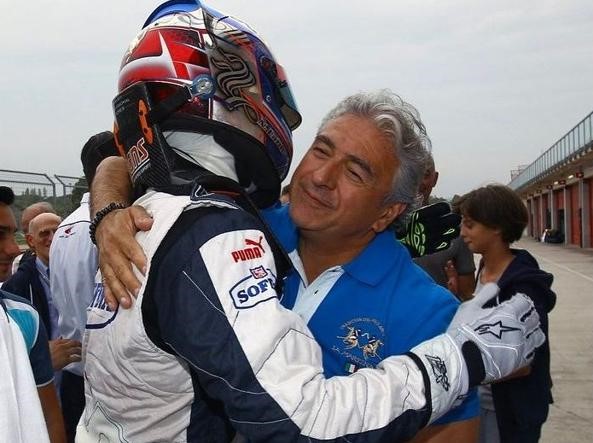
Nicholas Latifi with his father Michael in an early career shot. Instagram.
Photo gallery
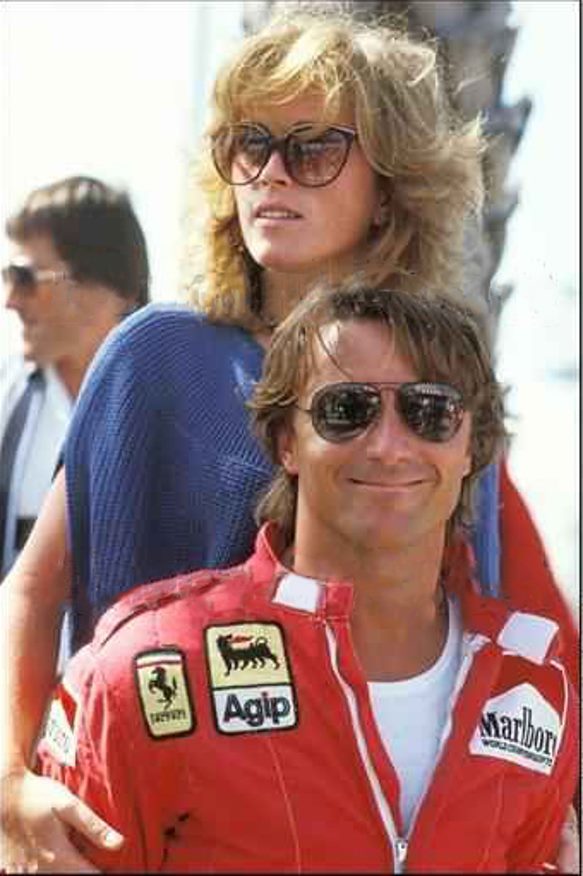
Rene' Arnoux with Pascale at Detroit in 1983. Photo by Bernard Asset.
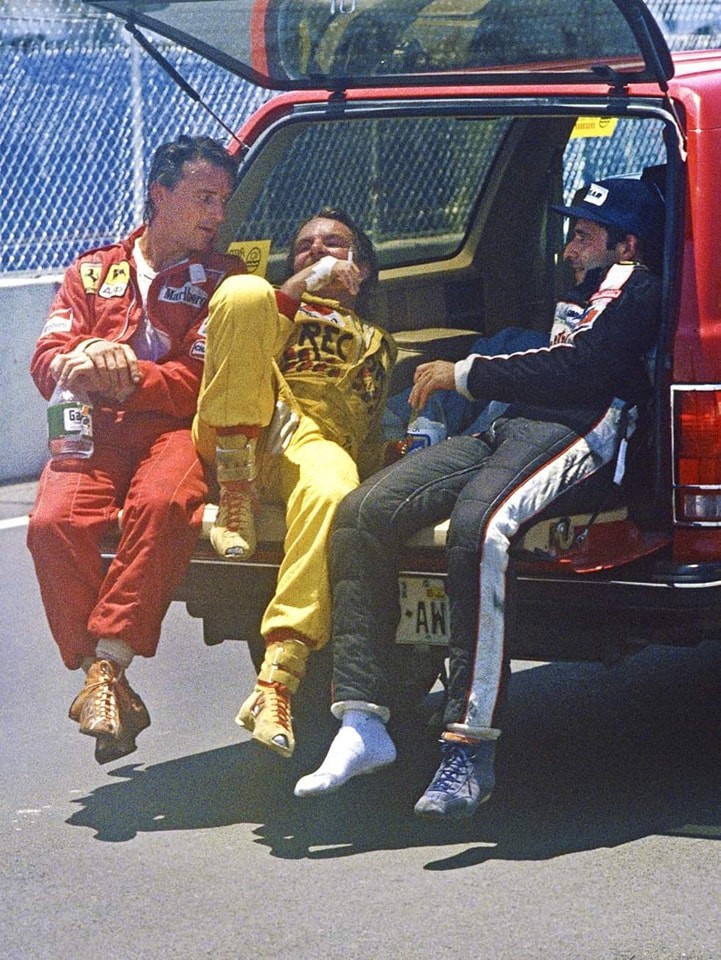
1984 Dallas Grand Prix. Rene Arnoux, Keke Rosberg and Elio De Angelis. A bottle of Gatorade (which was not one of the team's sponsors), shoes cut off at the toes, a bare foot, a cigarette in the shade of a tailgate and off to wait for the return to the track between one driving session and another. No press agents on the heels, no image obligations and no sprint races. Just a great desire to race and enjoy the moment. This was the real Formula 1.
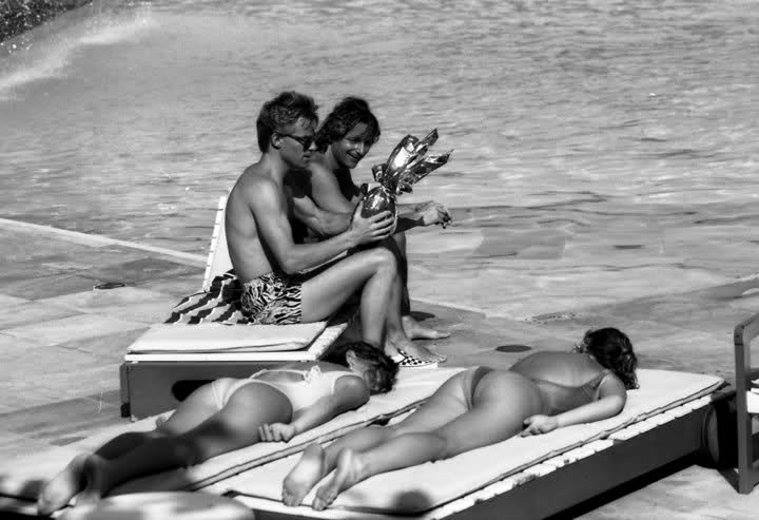
René Arnoux and Stefan Johansson relaxing with two beautiful girls in 1988.
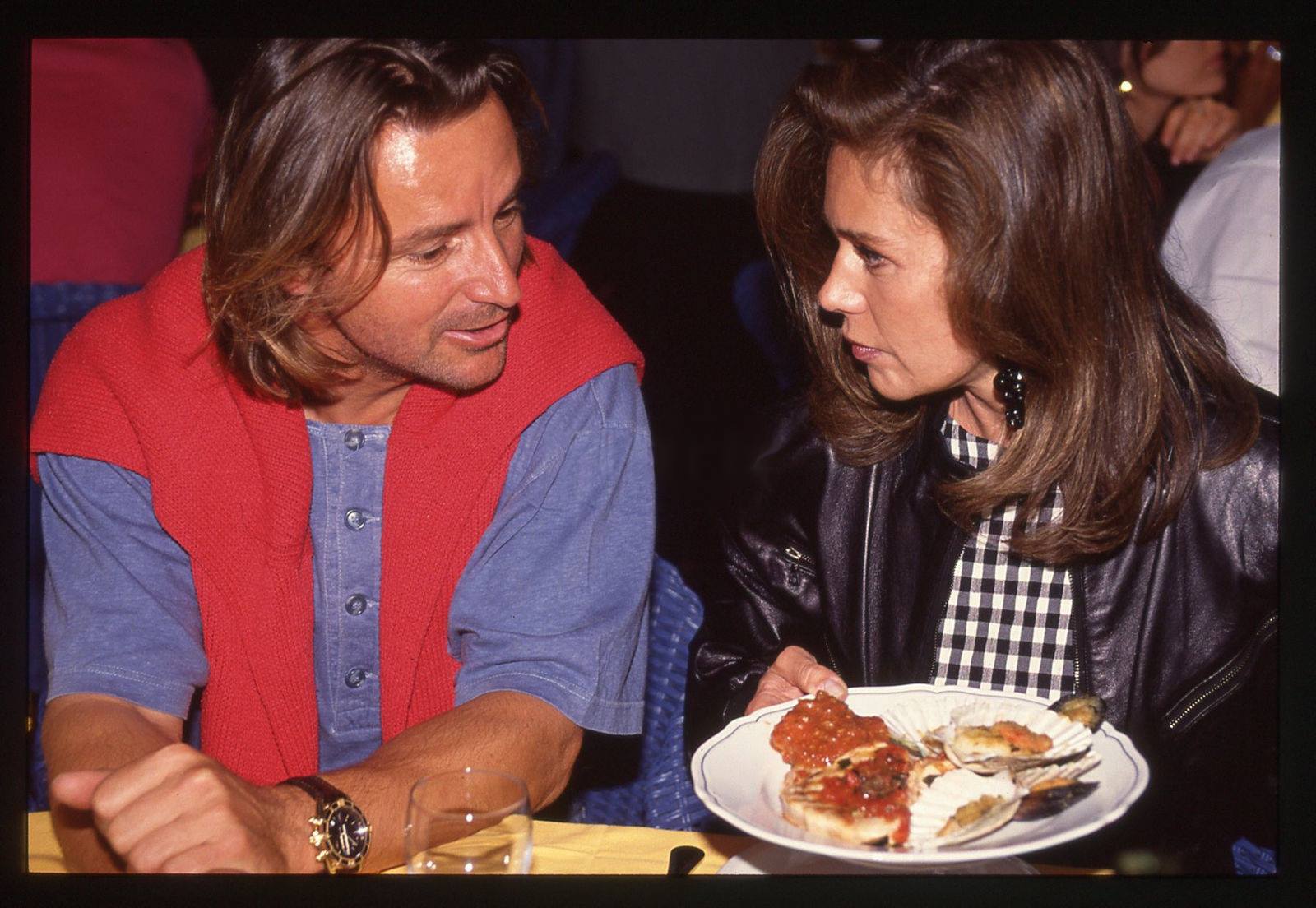
René Arnoux with Corinne Clery at ‘discoteca Paradiso’ in Rimini in 1992.
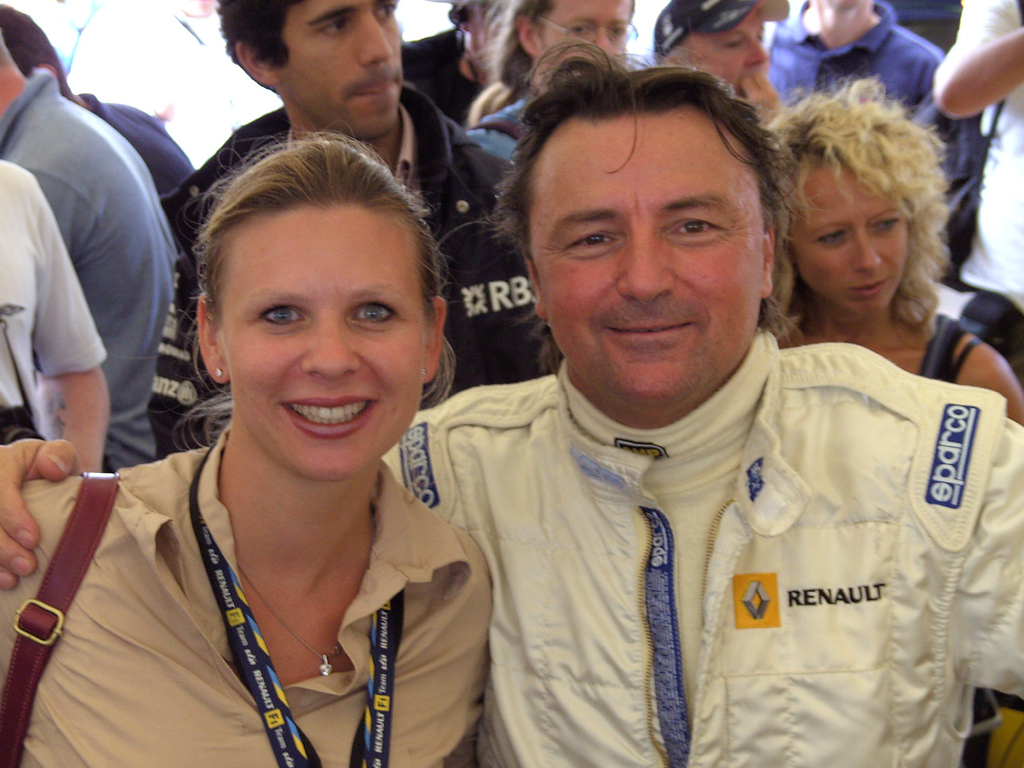
René Arnoux with a blonde female fan at Goodwood in 2006.

German Grand Prix at Hockenheim, 22-25 July 2010. Photo by Girardo & Co.

Daniel Ricciardo with his girlfriend Heidi Berger. It wasn't until August 2022 that the couple confirmed their relationship.
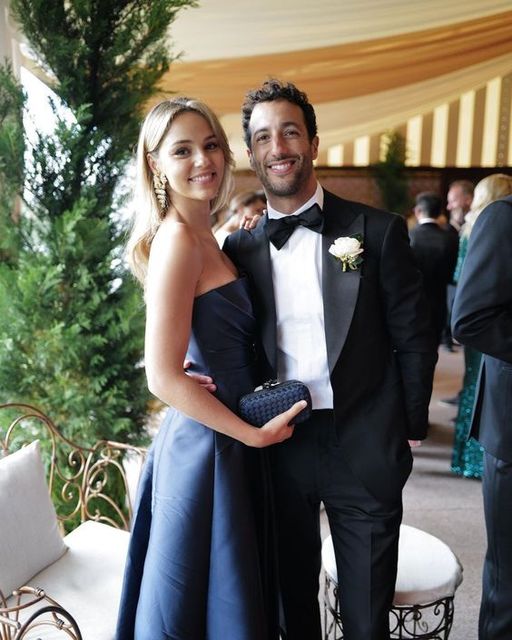
Daniel Ricciardo and Heidi Berger at the wedding of Scotty James and Chloe Stroll. Photo by Instagram.

Heidi Berger is the daughter of former Austrian Formula One champion driver Gerhard Berger. Her mother is Portuguese former model Ana Corvo. Photo by Instagram.
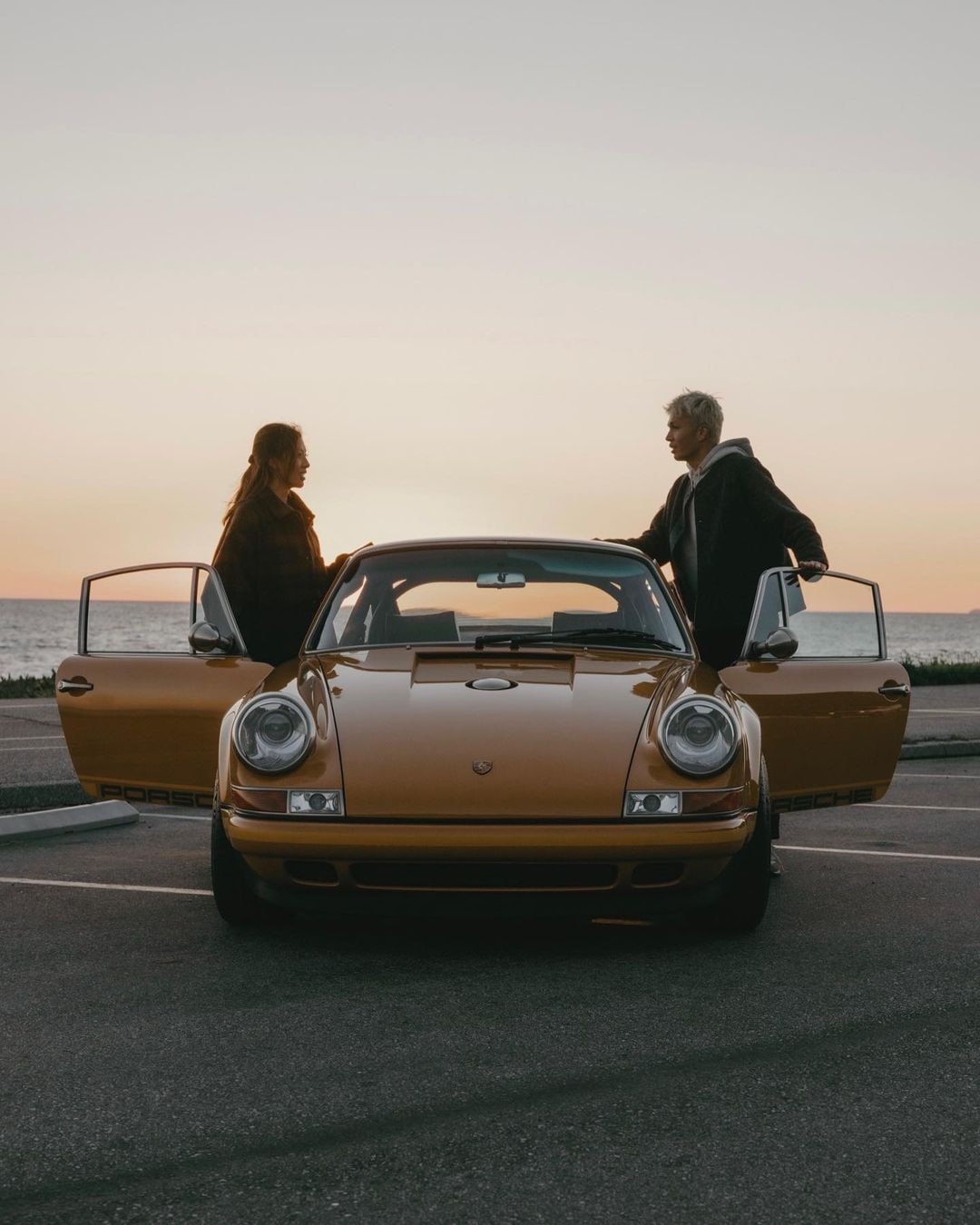


While some of his fellow Formula One drivers introduced cars from the teams they race with, Alex Albon switched it up. And he has just purchased a Porsche 911 redesigned by Singer.
The caption of the set of pictures pokes fun at his girlfriend, as he wrote, "sunset drives with my girl", with a heart-eyed emoji, adding, "and Lily", a reference to his girlfriend, Lily Muni He. She hopped in the comments to joke, "I read the first part… I was like [blush emoji] and then I read the second part." The vehicle in question is a retro Porsche 911 reimagined by Singer Vehicle Design. It comes with a Bahama Yellow paint job combined with Geyser Grey and seems to be from the Porsche Experience Center in Los Angeles, California. The interior features dark leather and the sports car is fitted with silver Fuchs wheels.
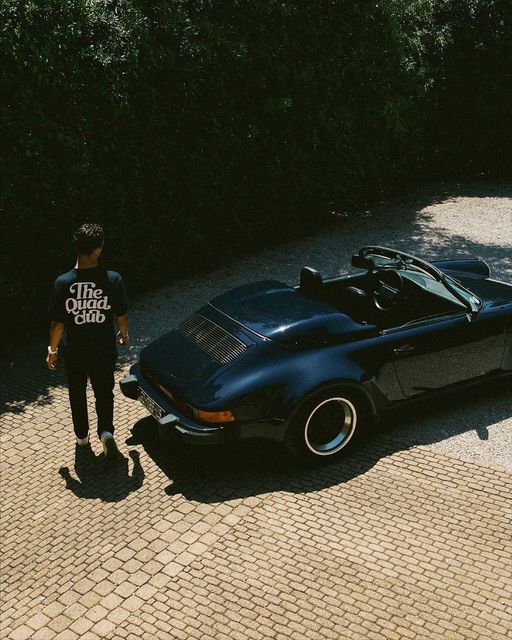
Lando Norris and his classic Porsche 911 convertible.

Lando Norris stops for a photo with a fan in front of his classic Porsche 911 convertible.
Videos



Comments
Authorize to comment